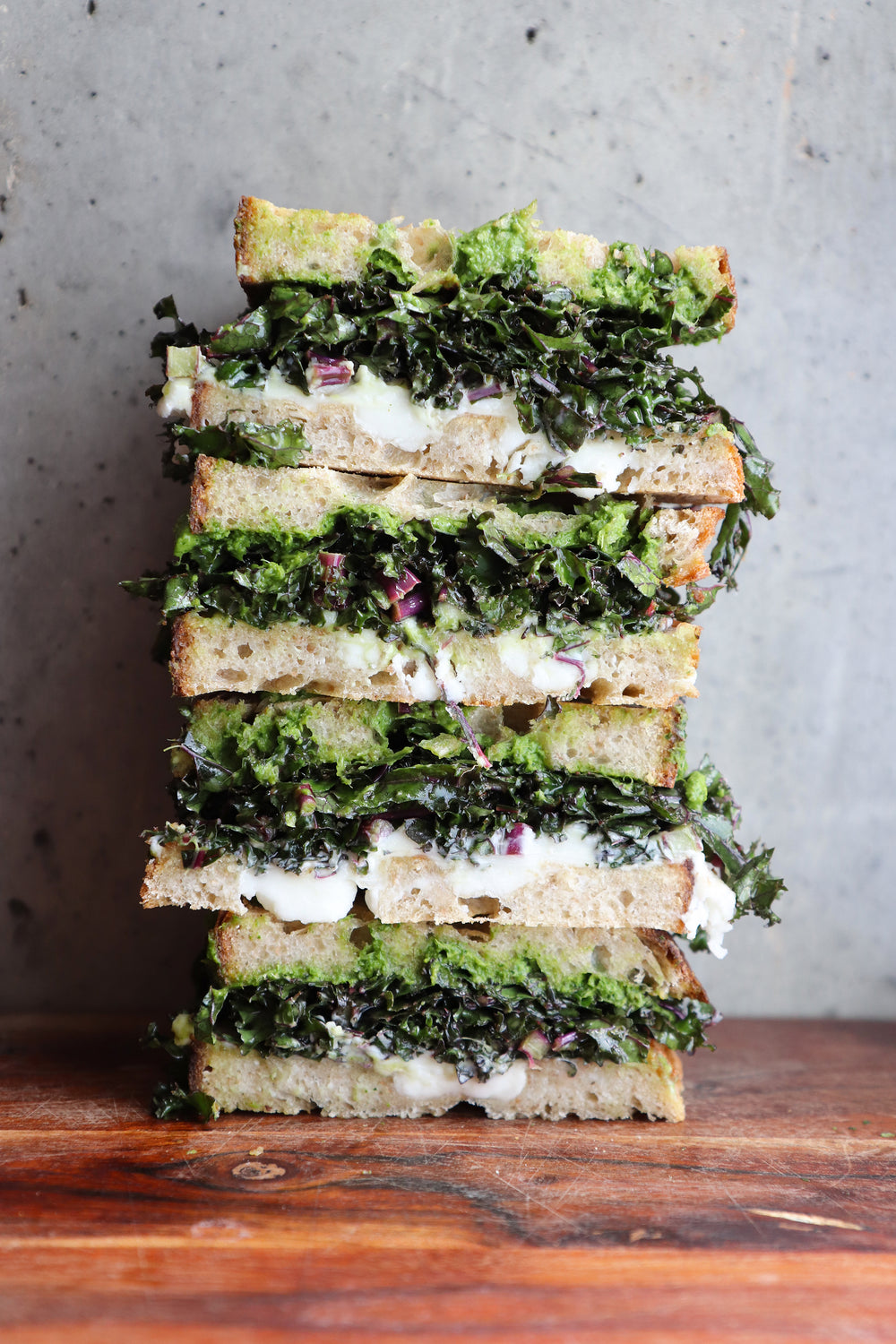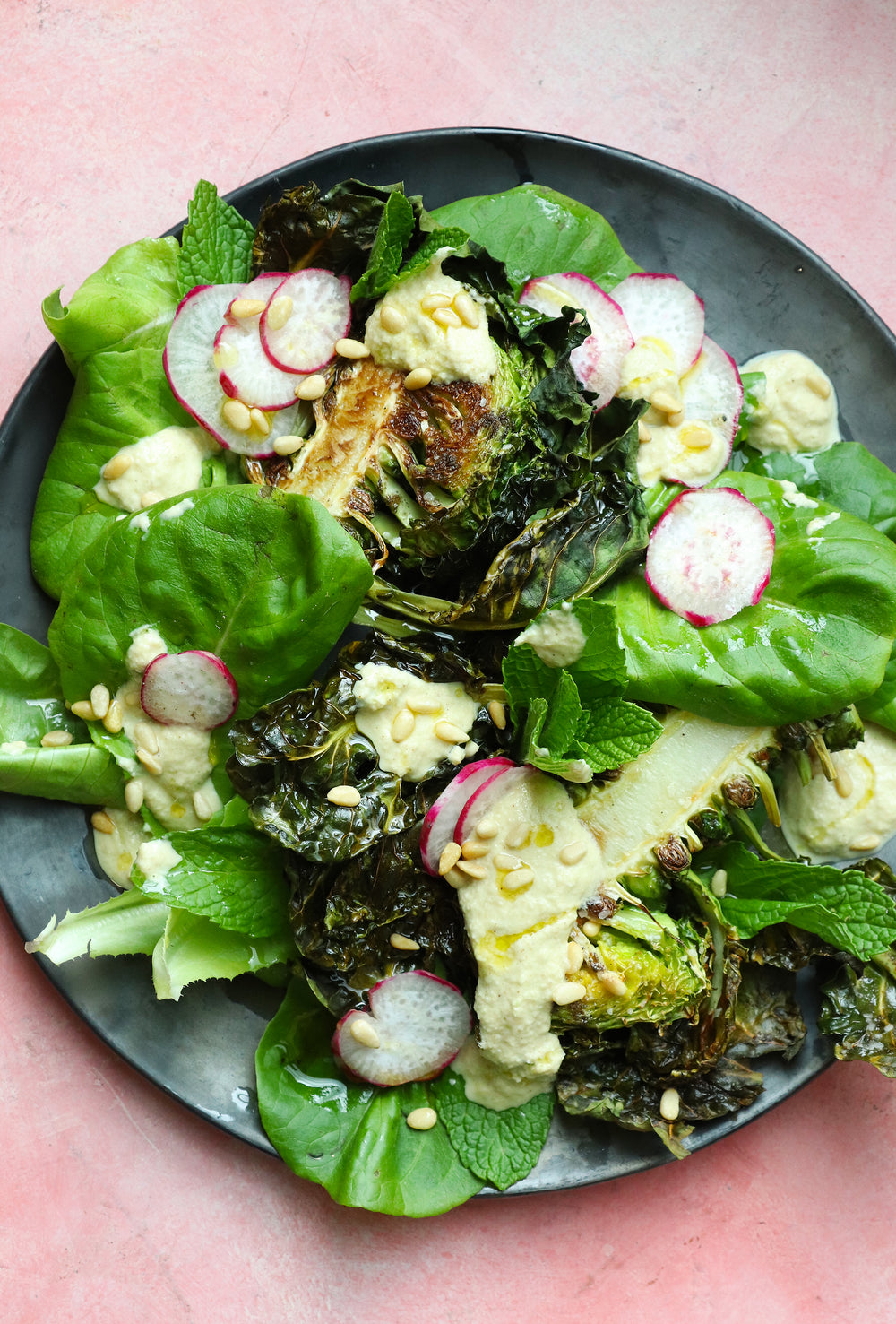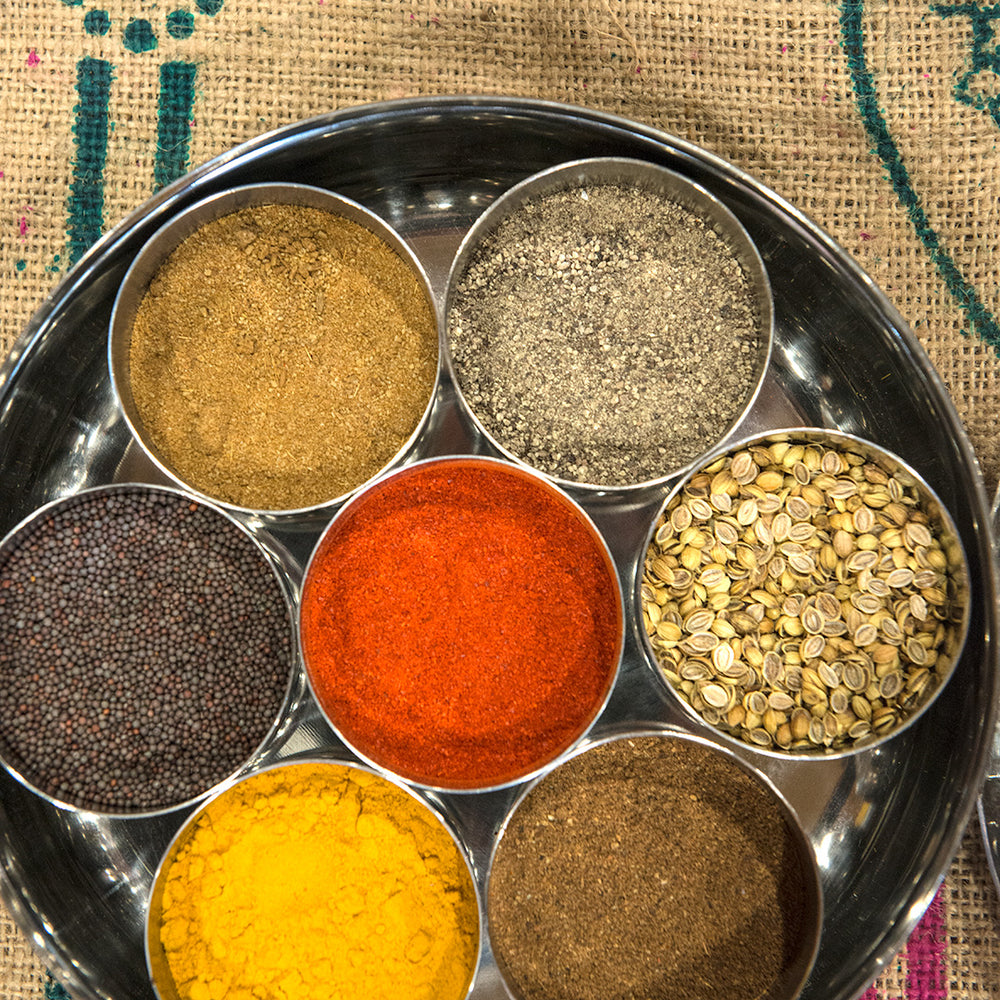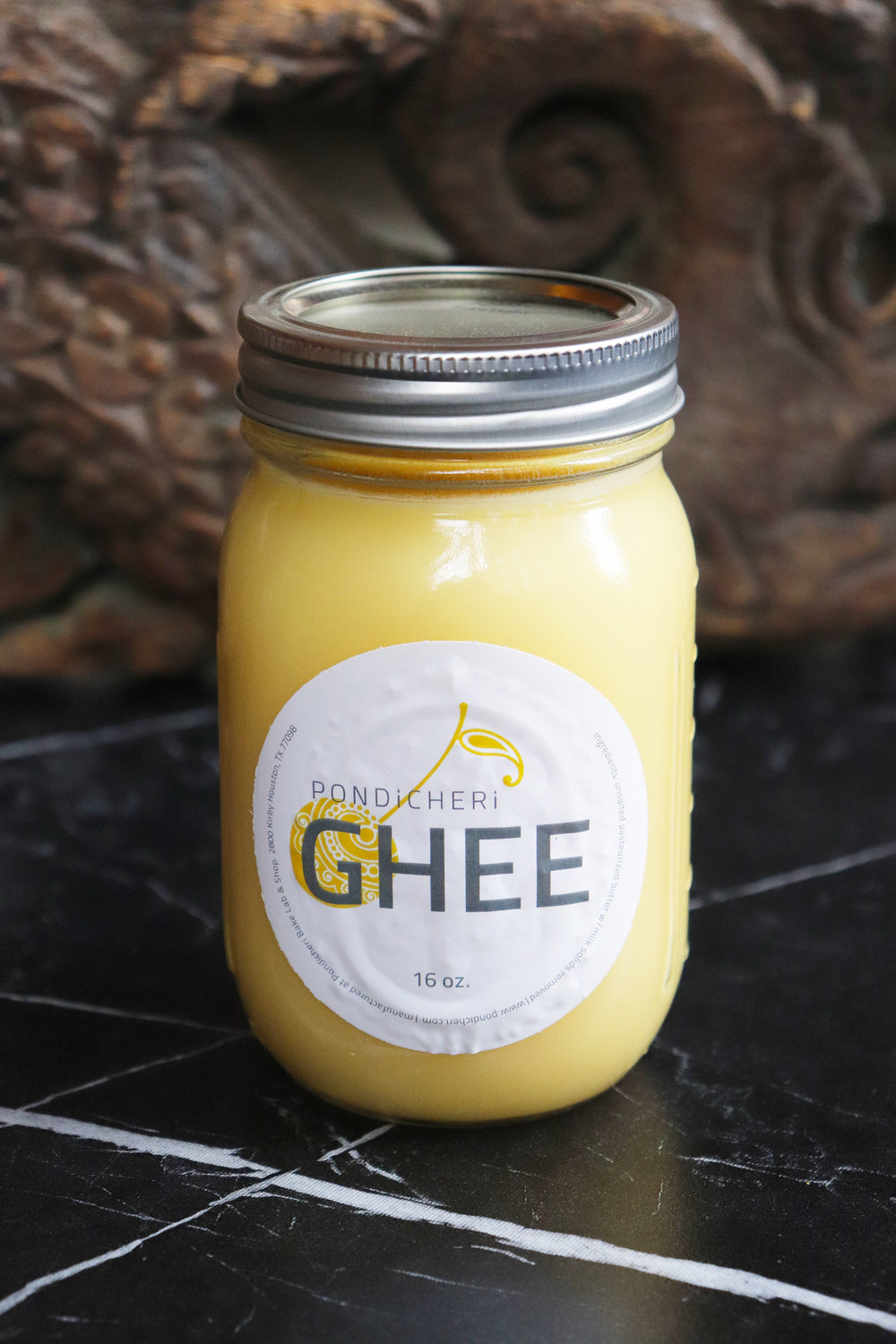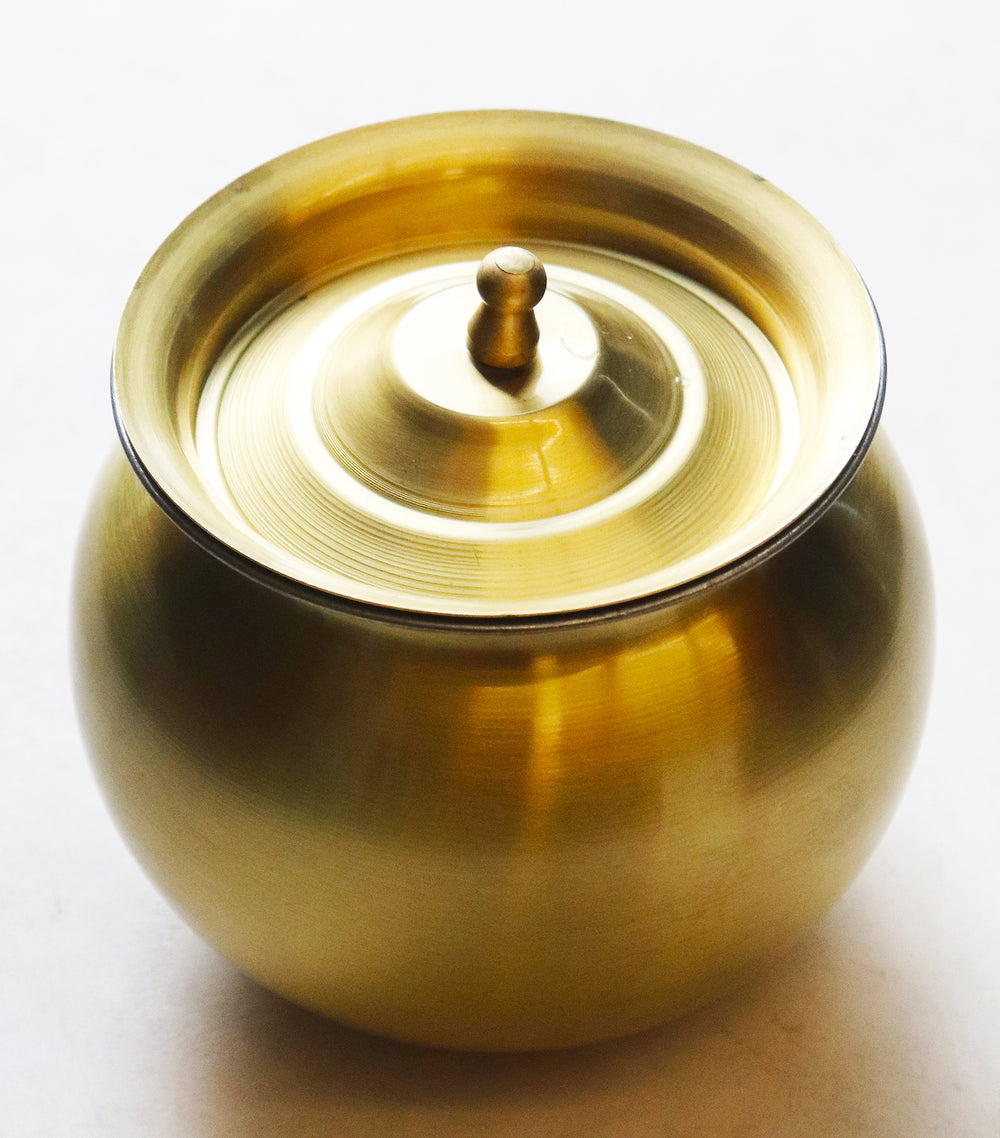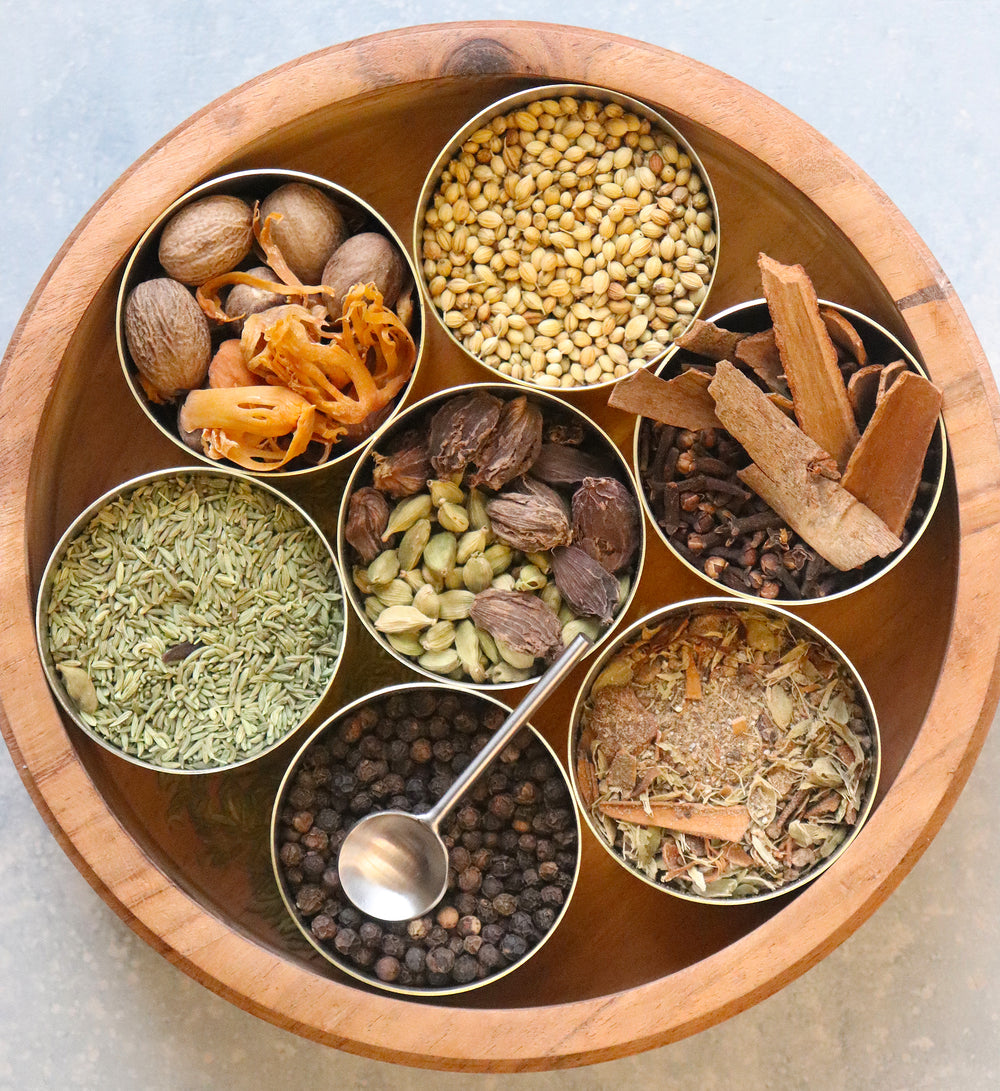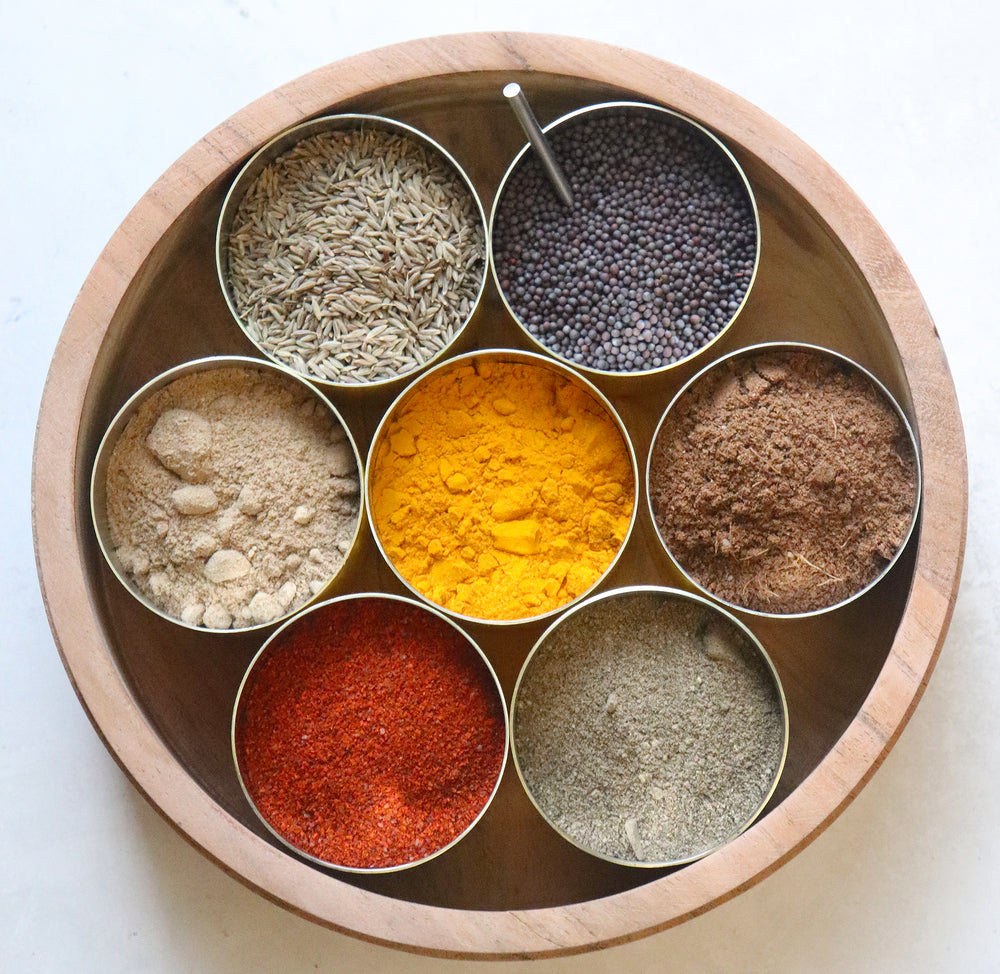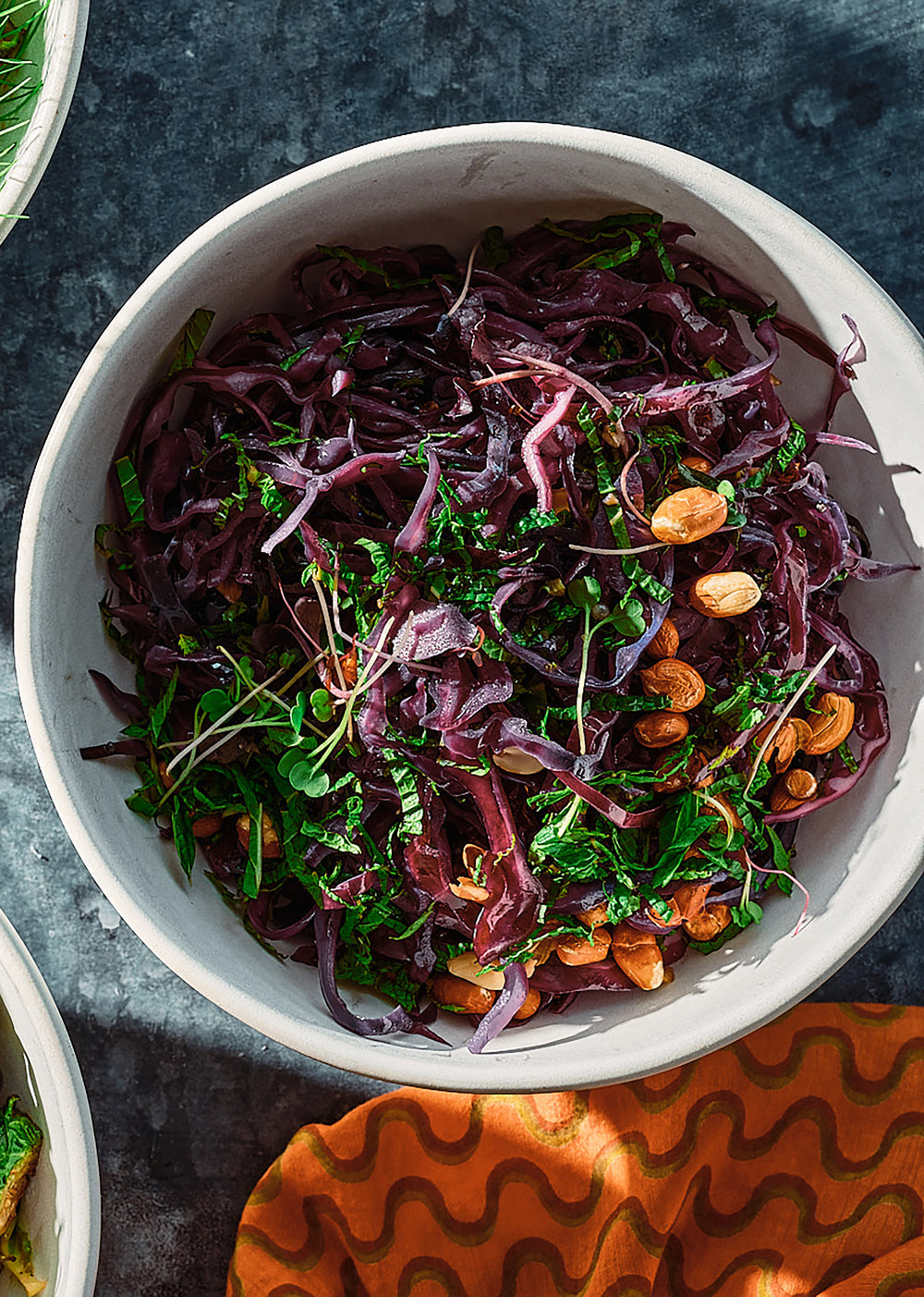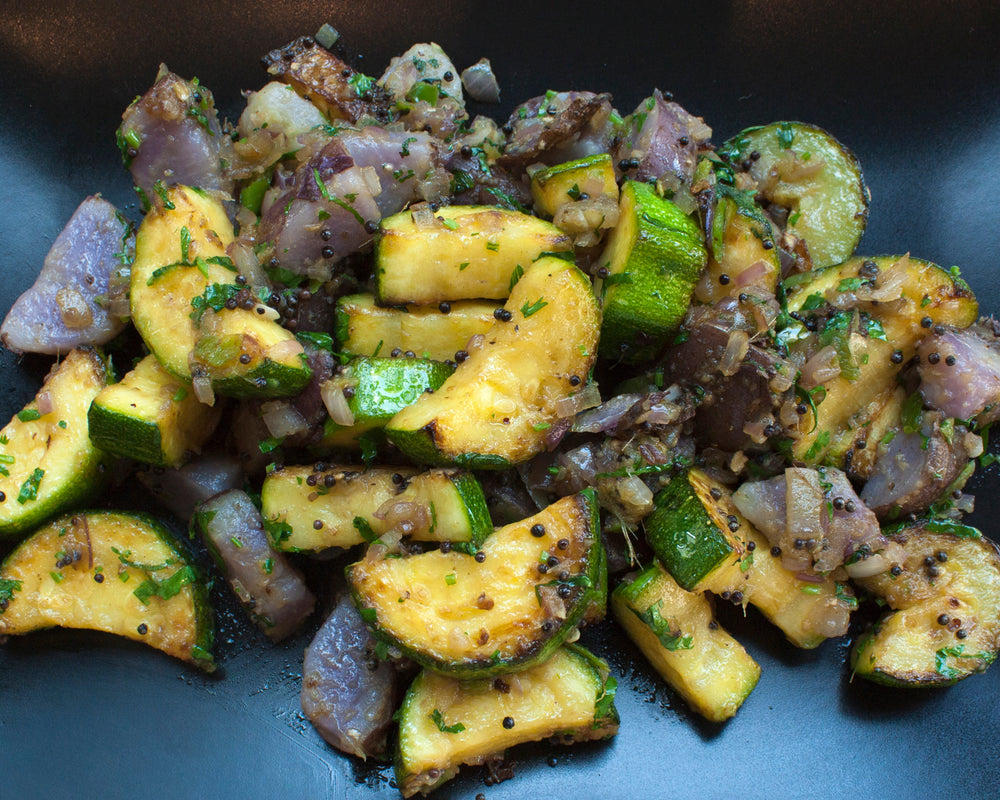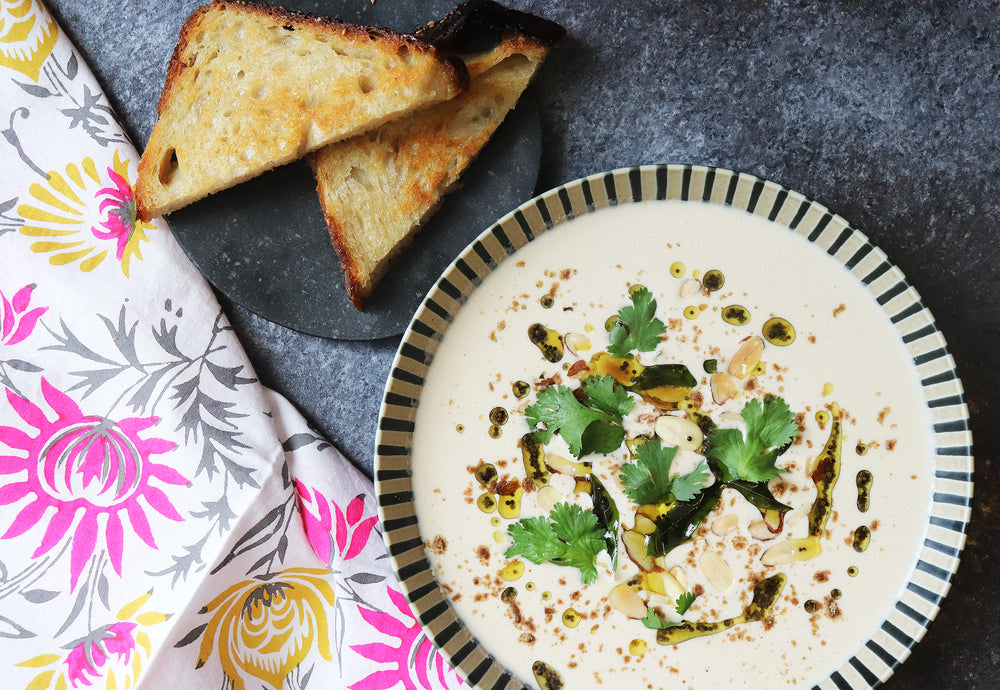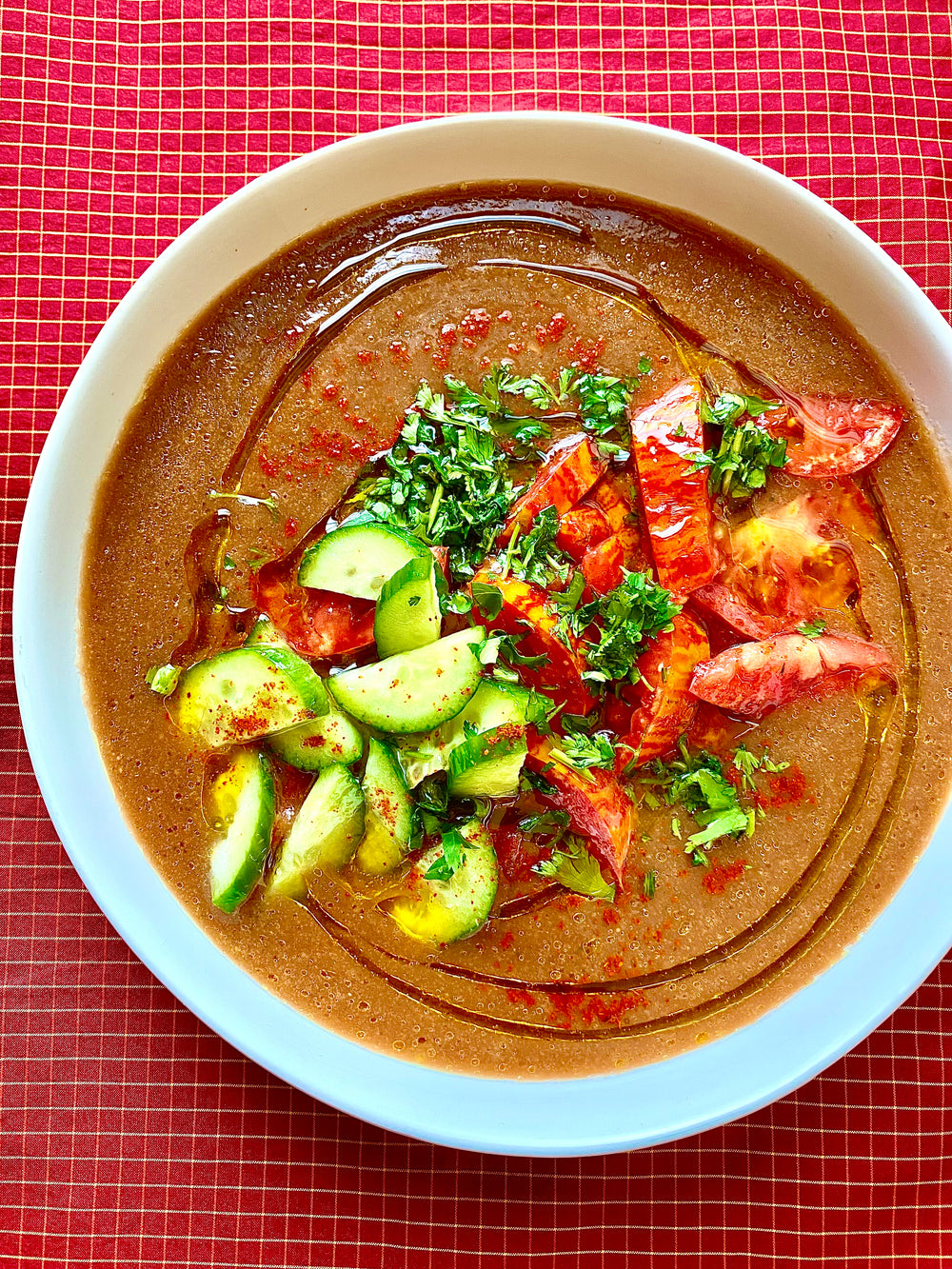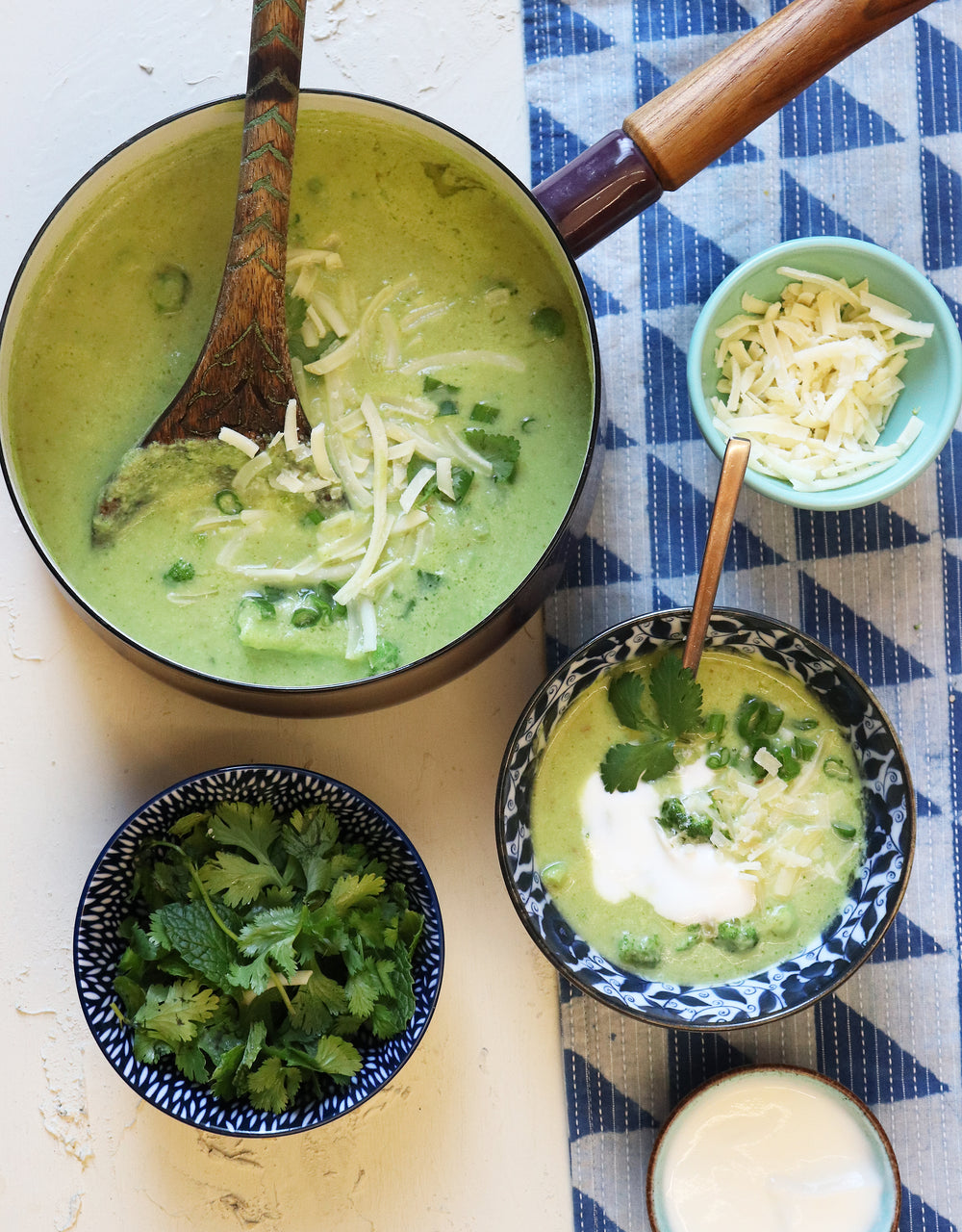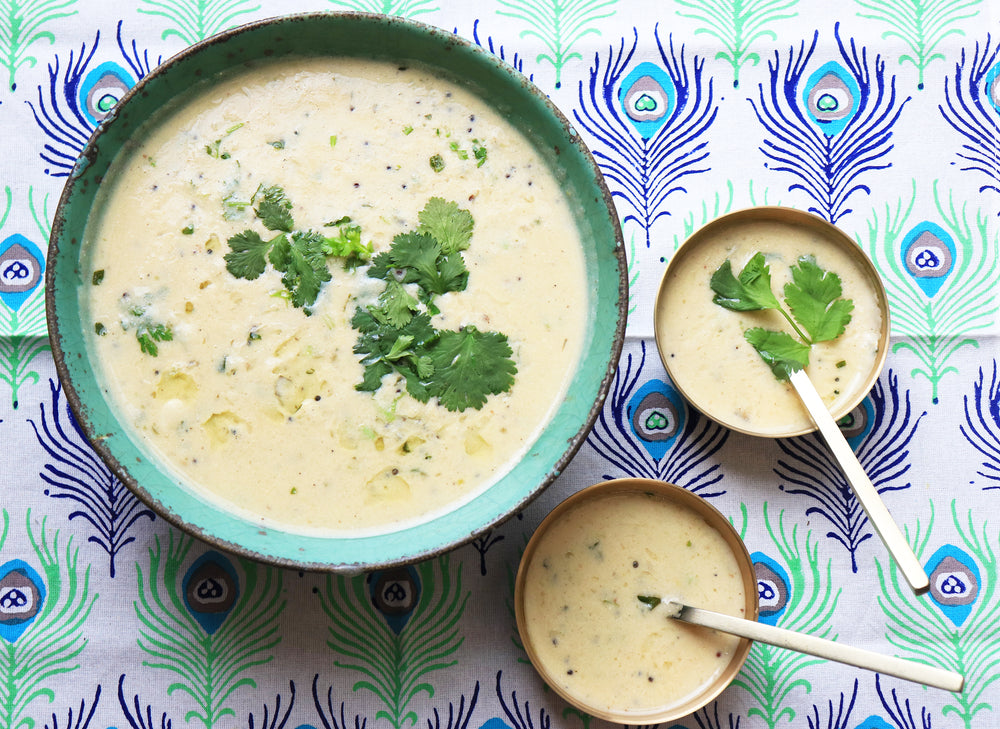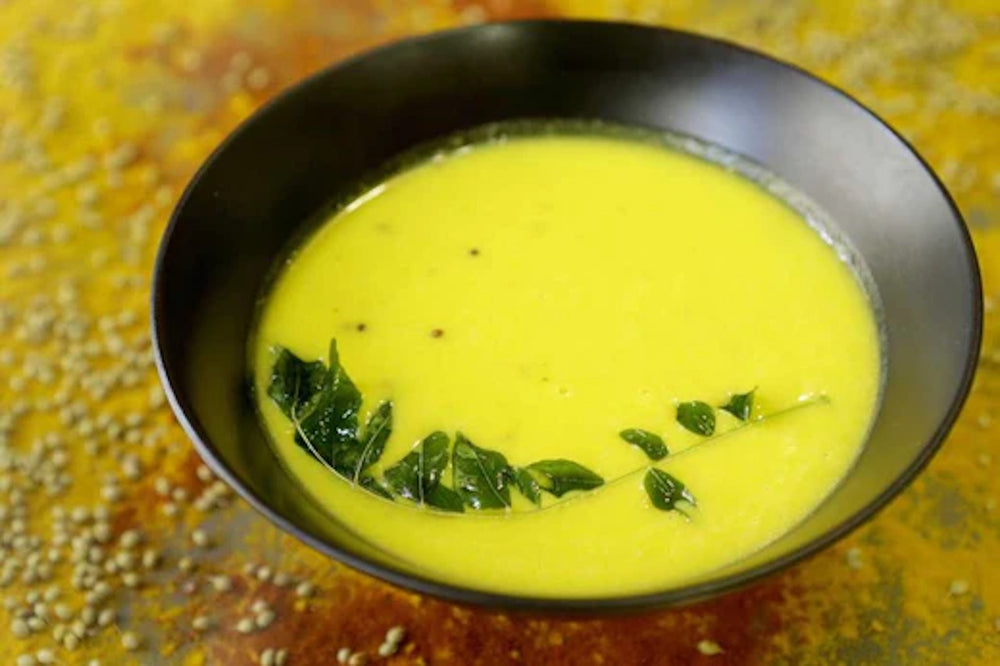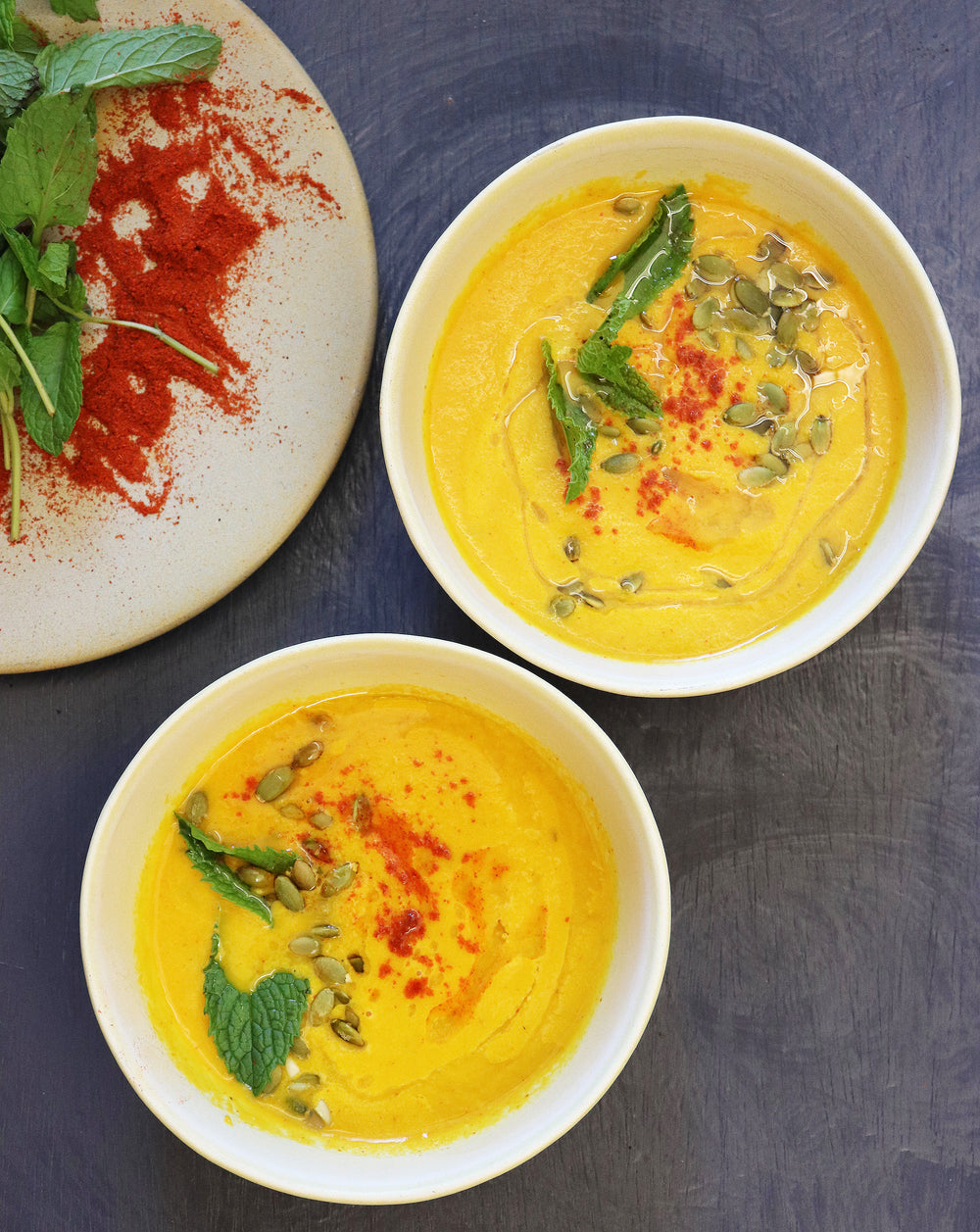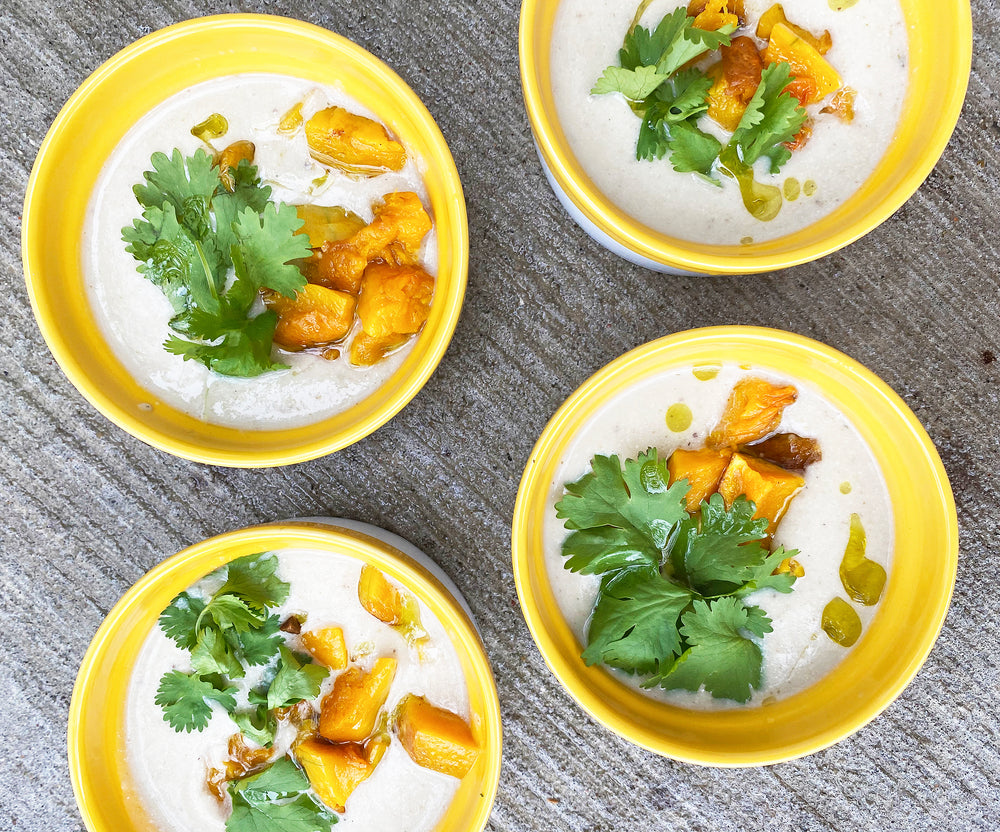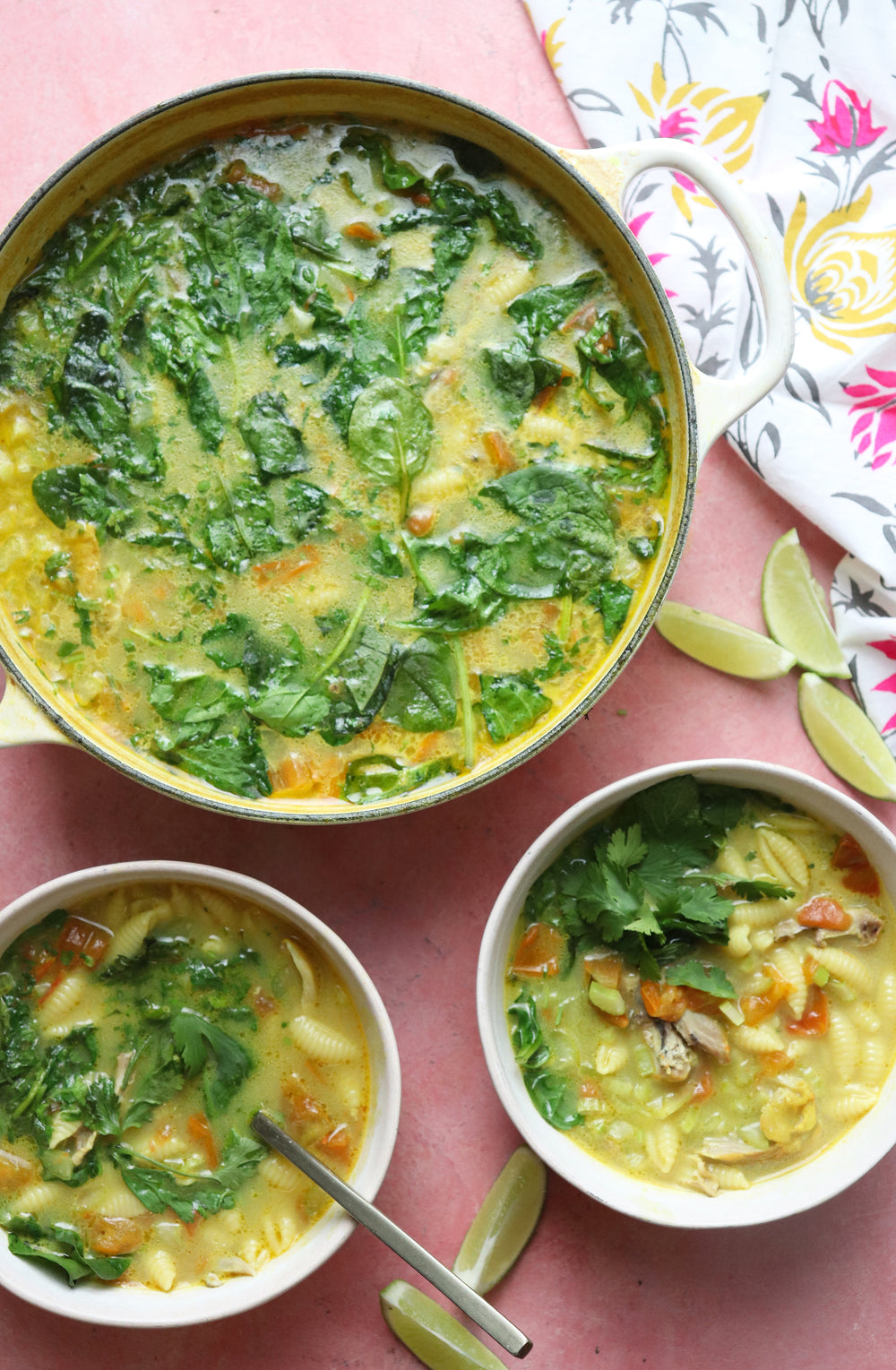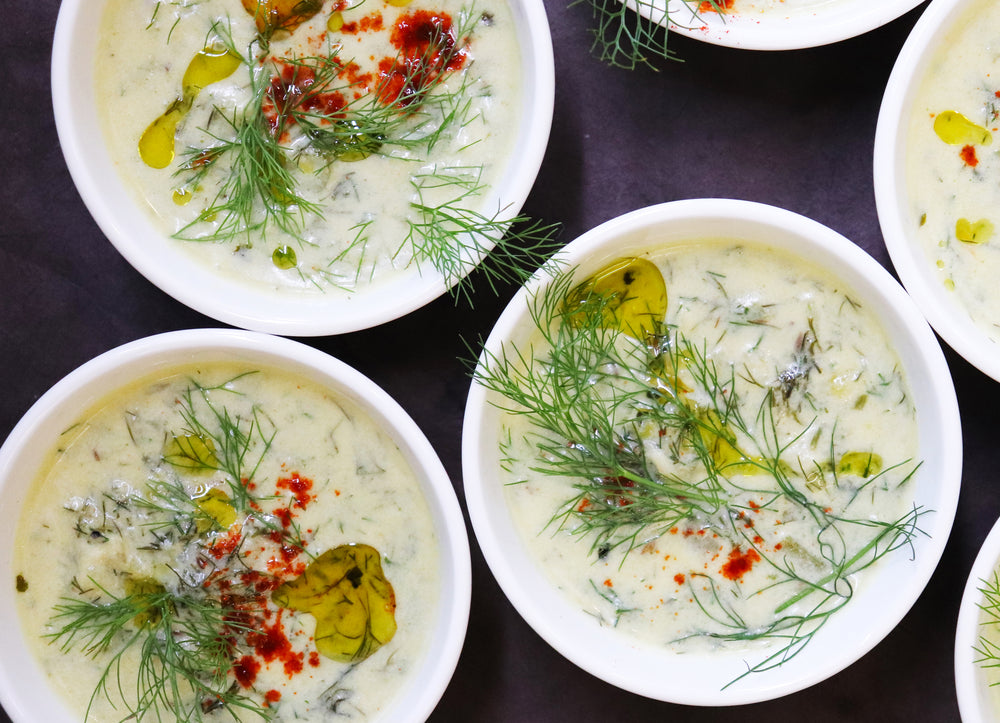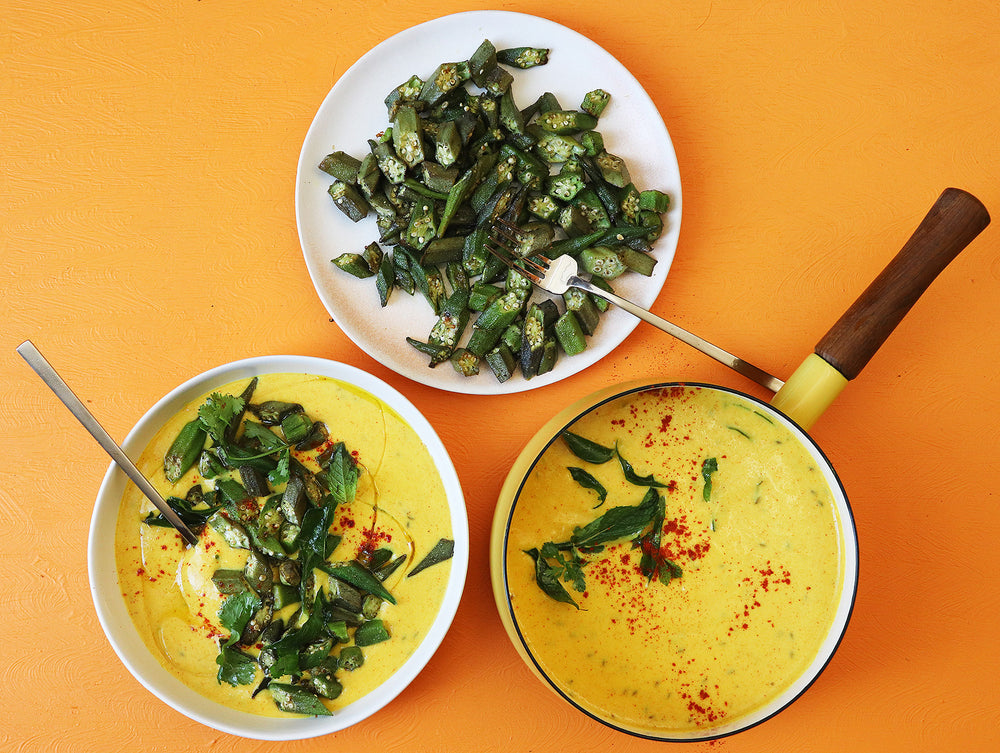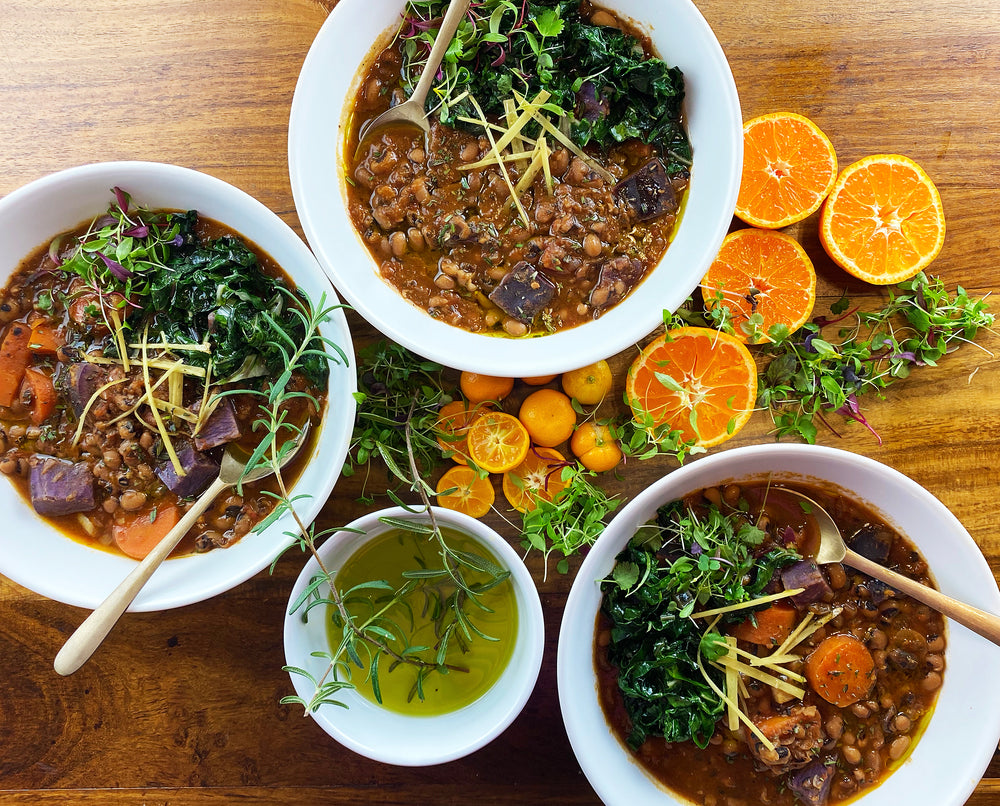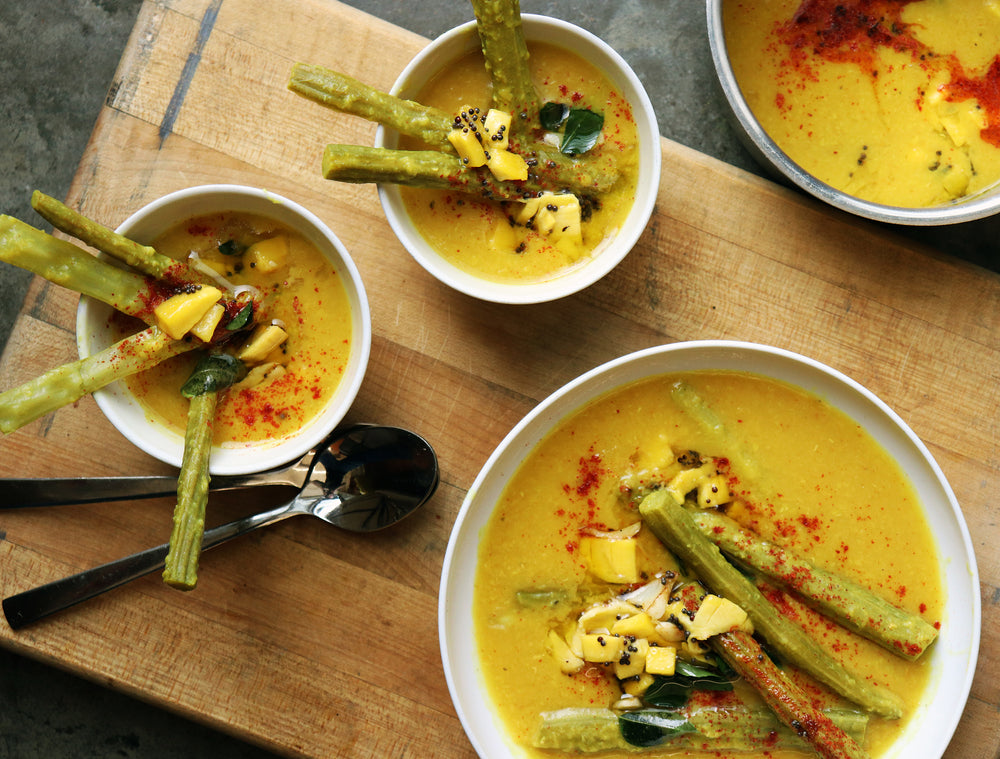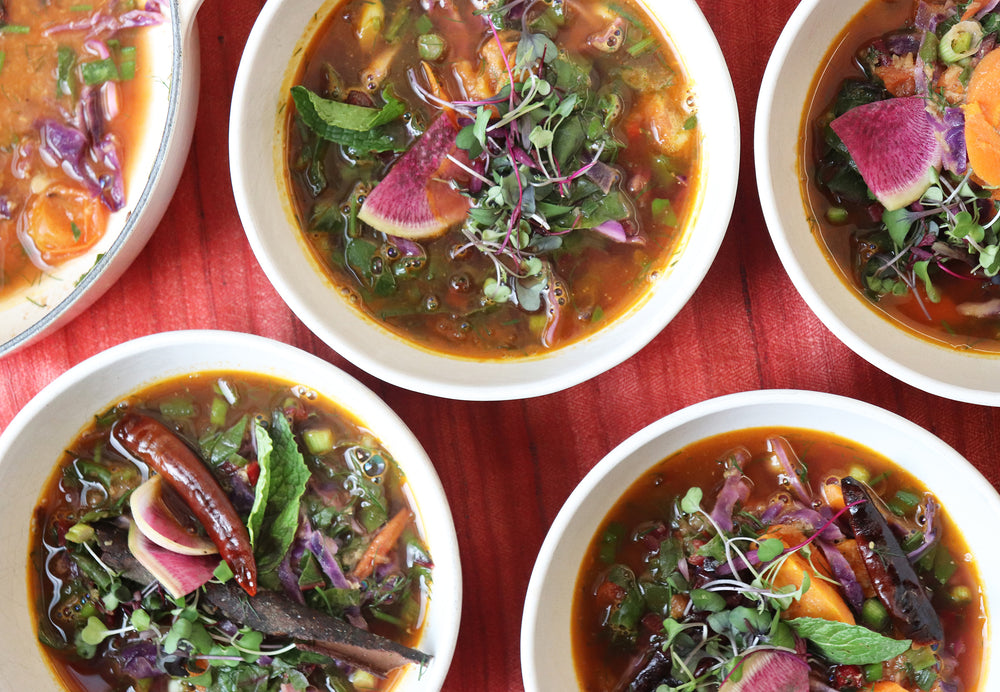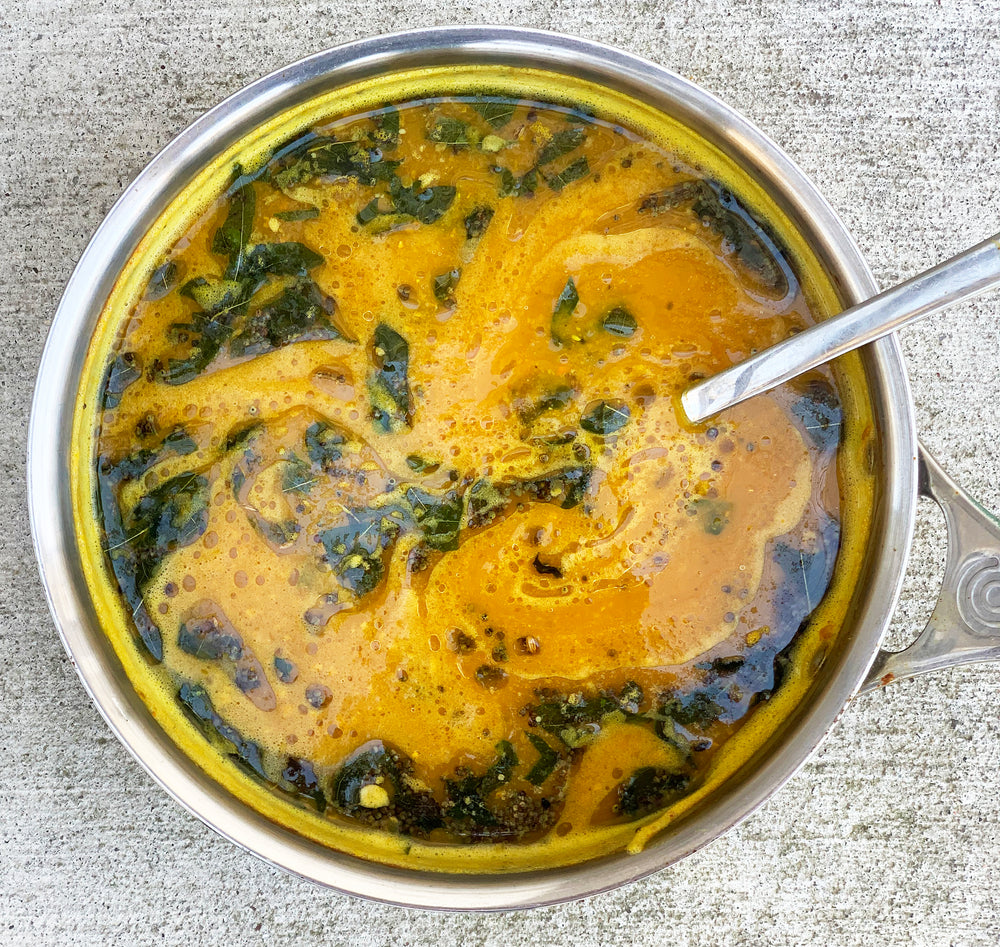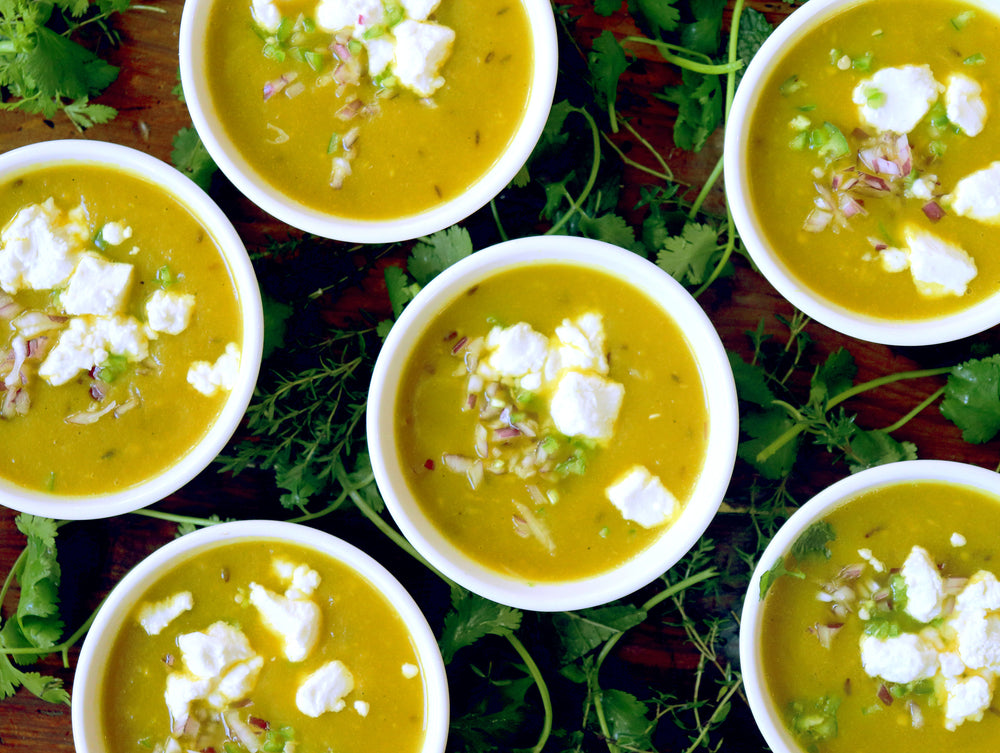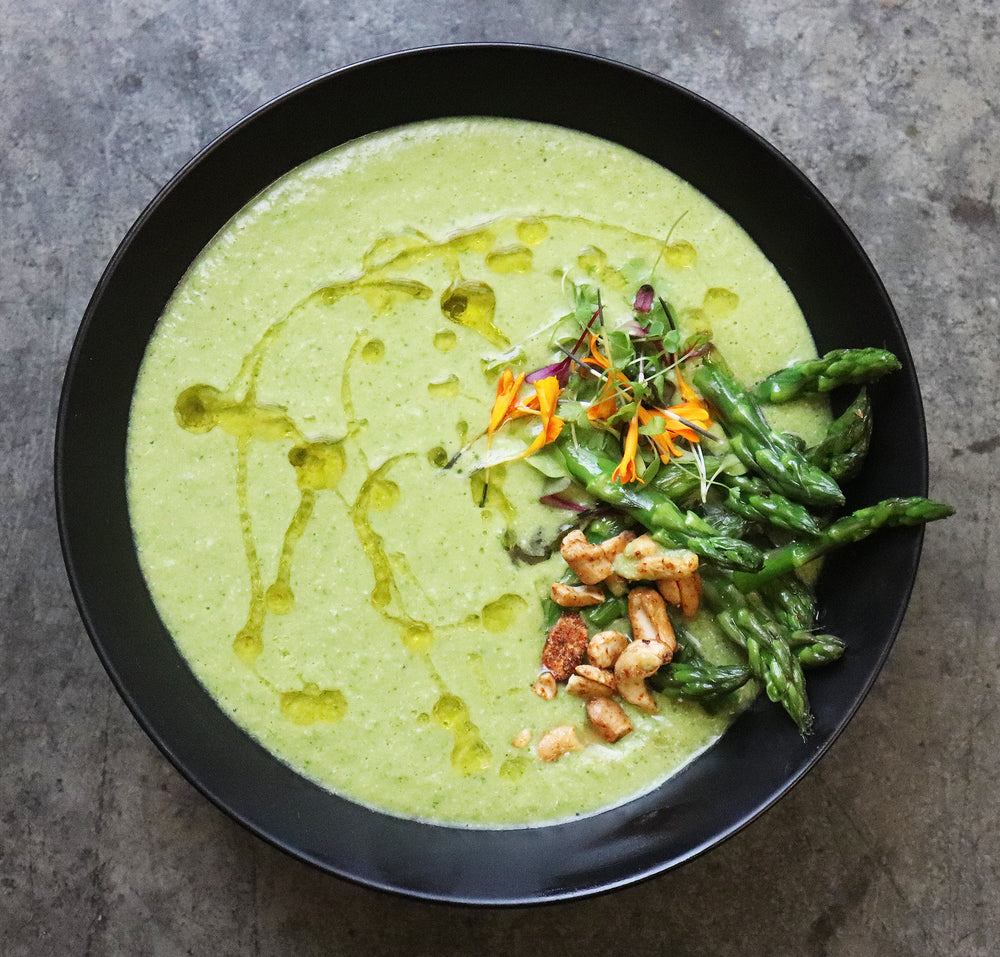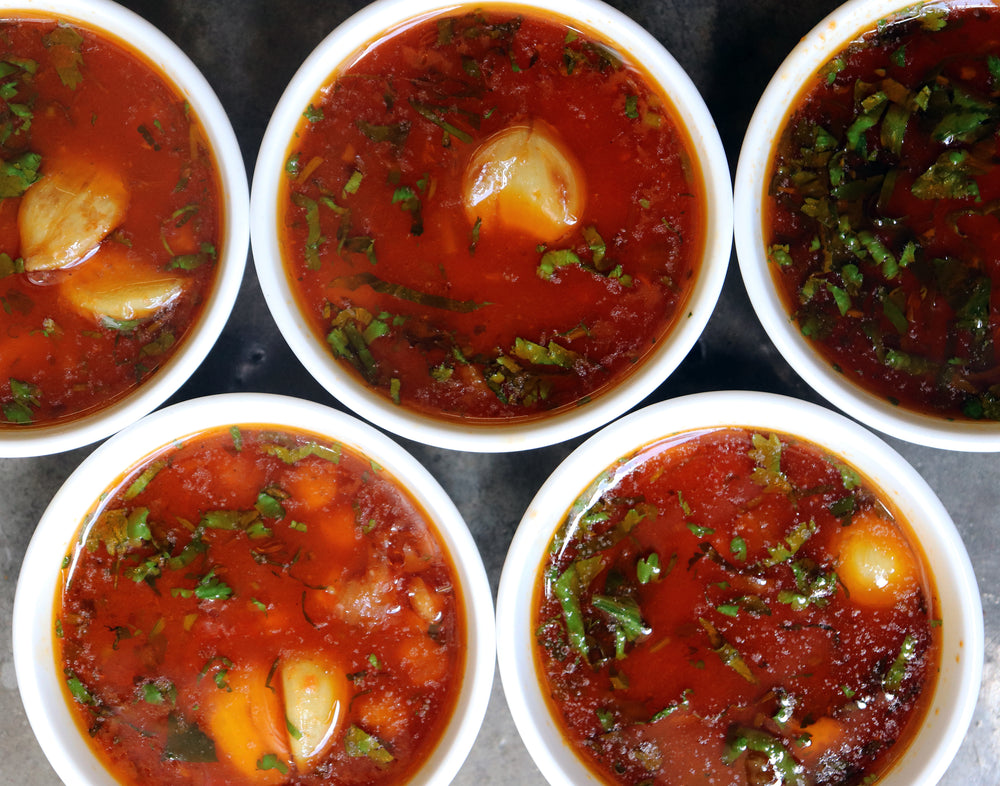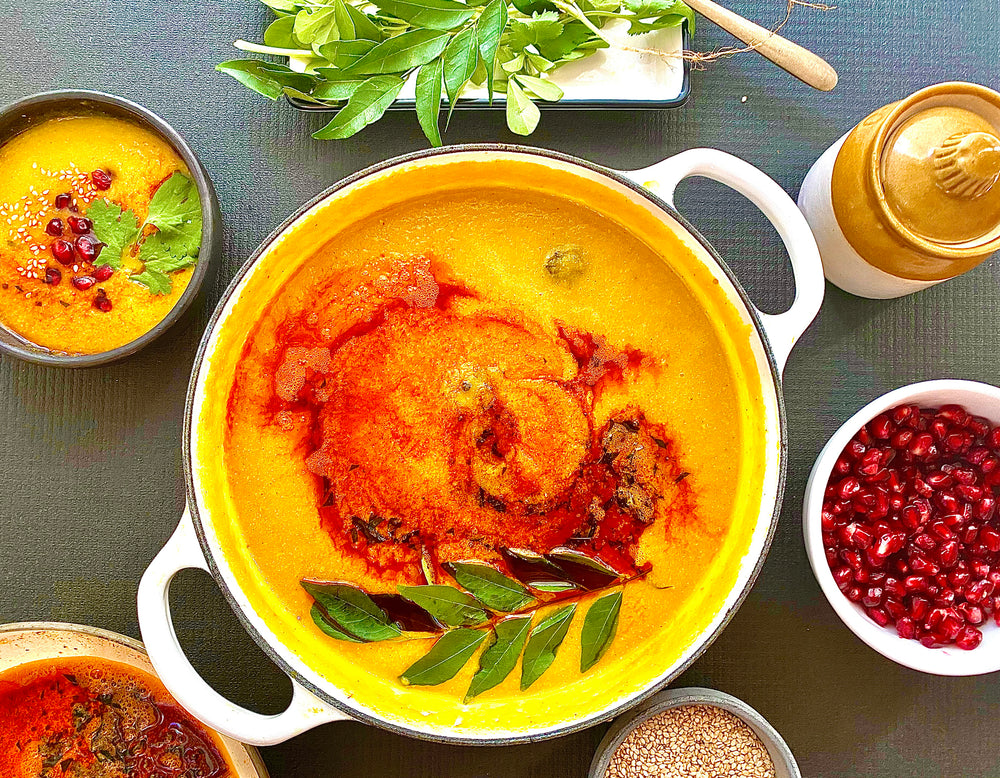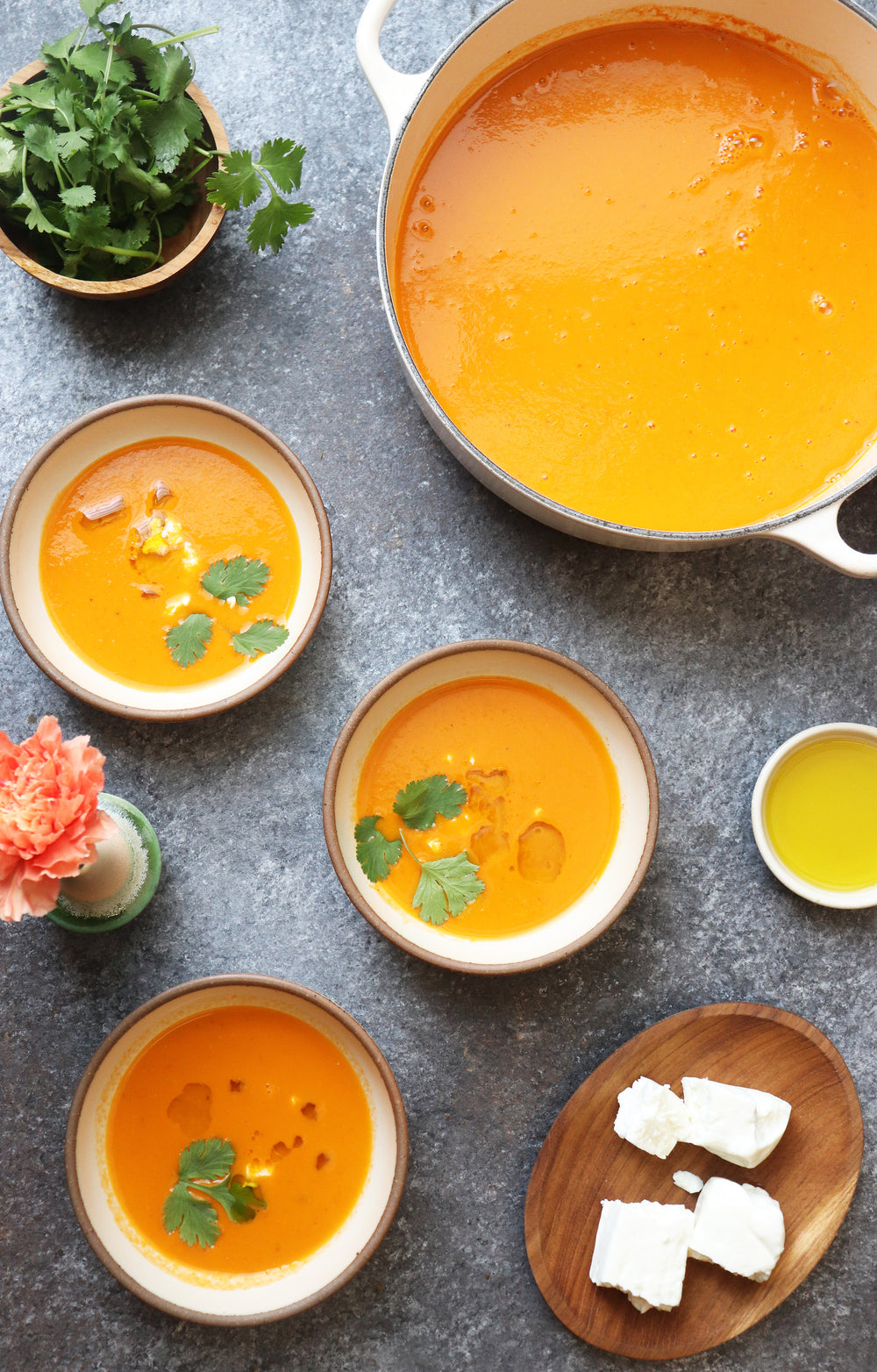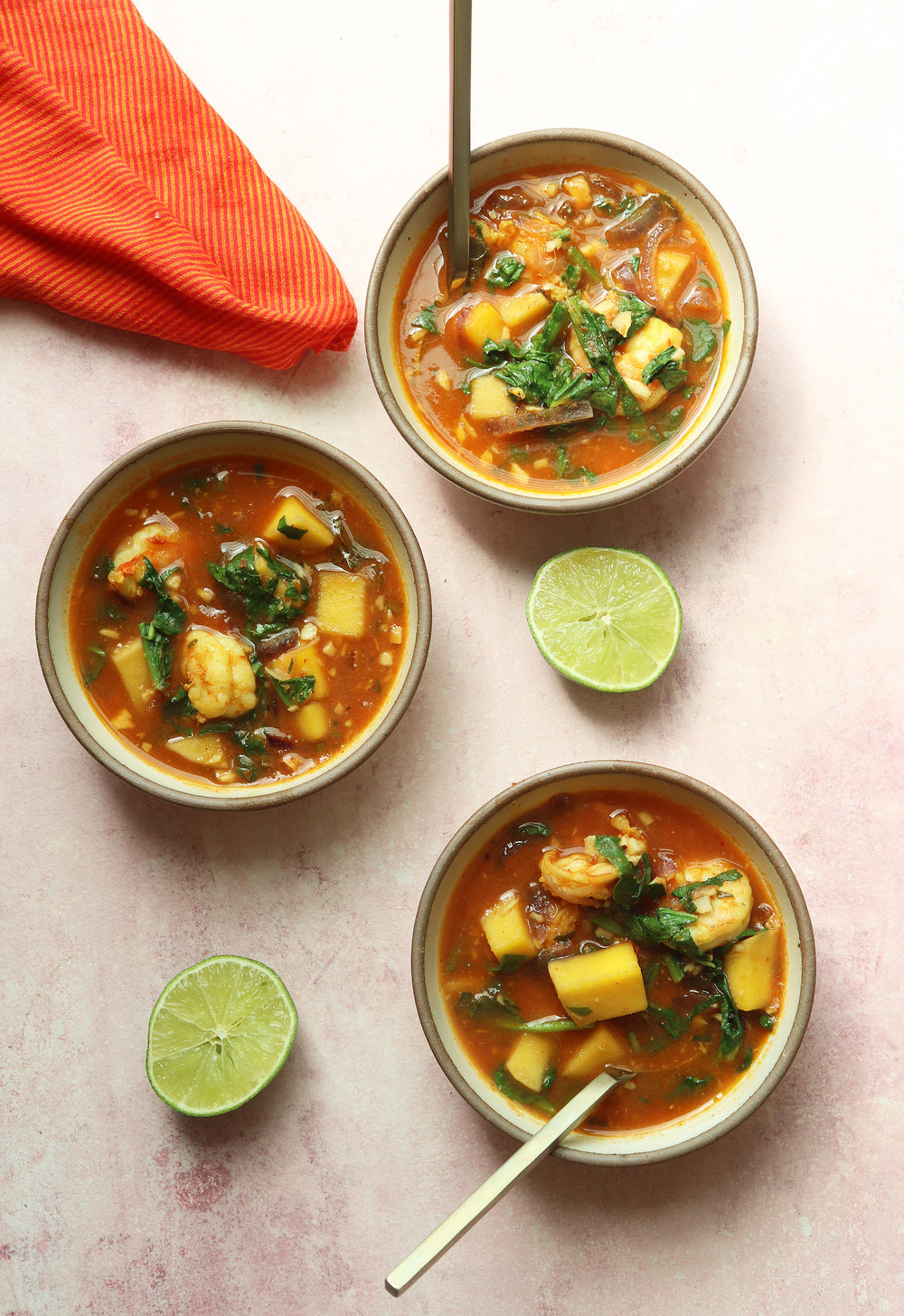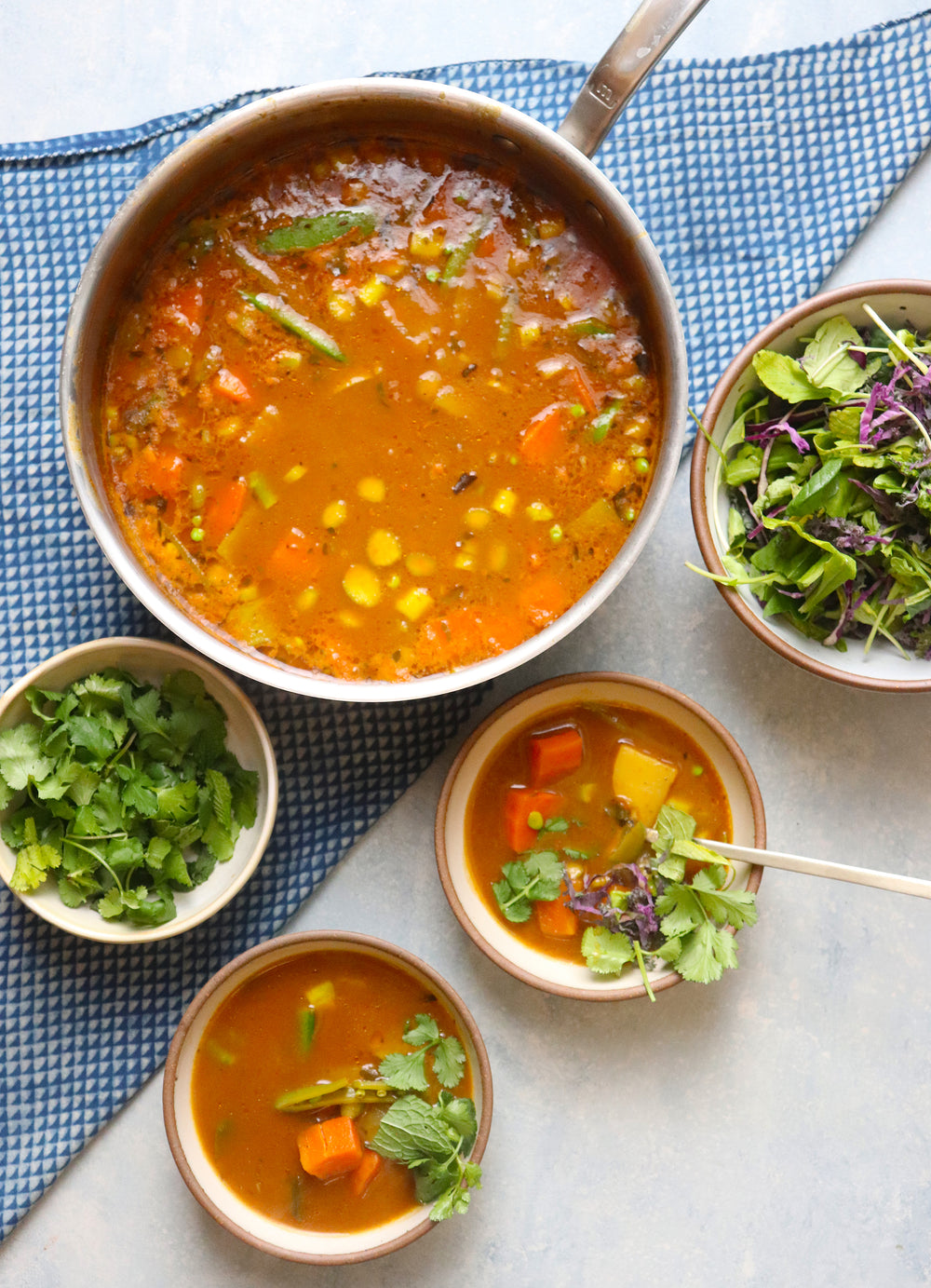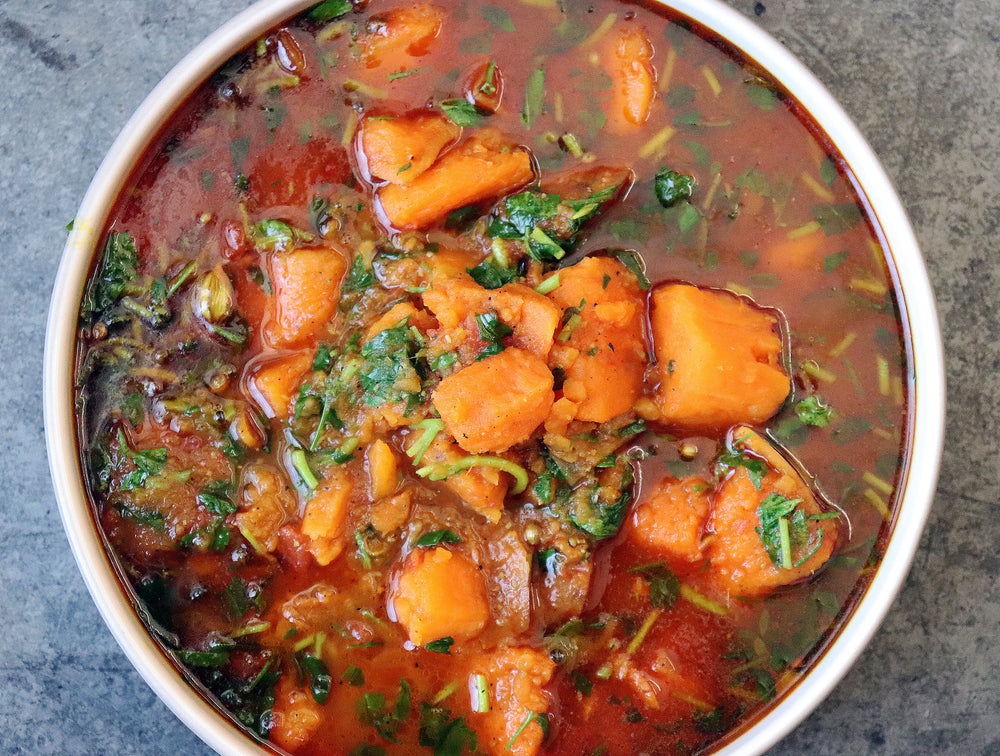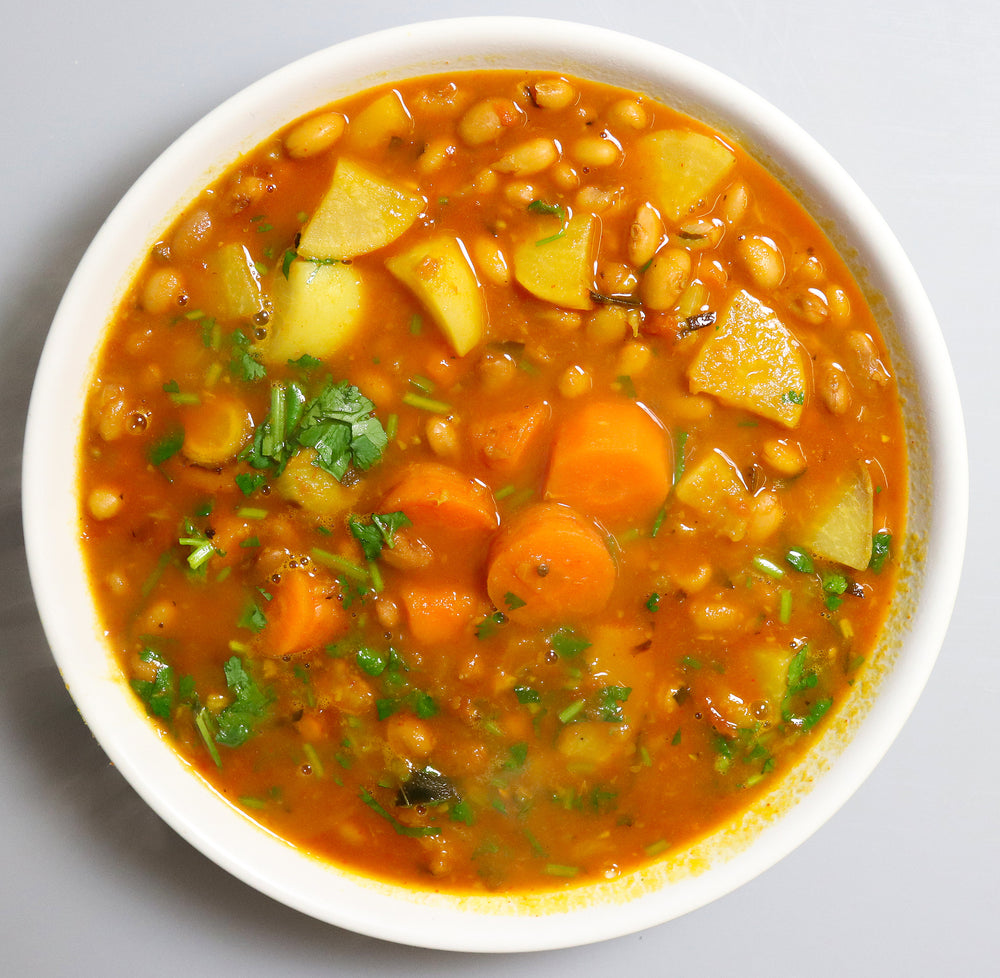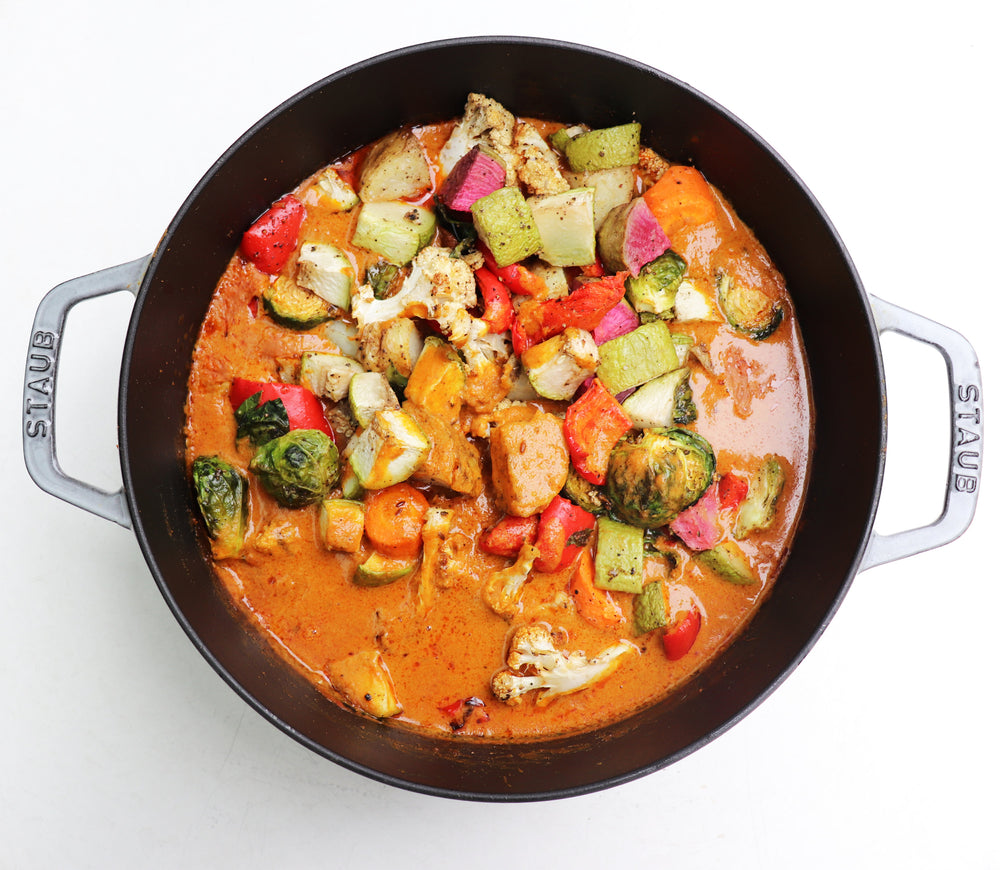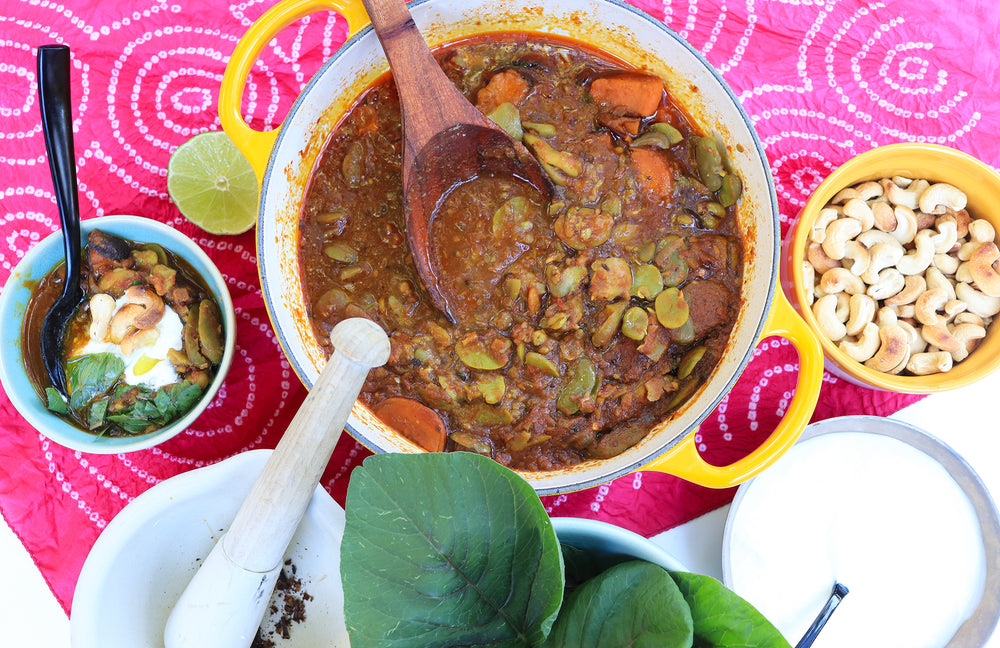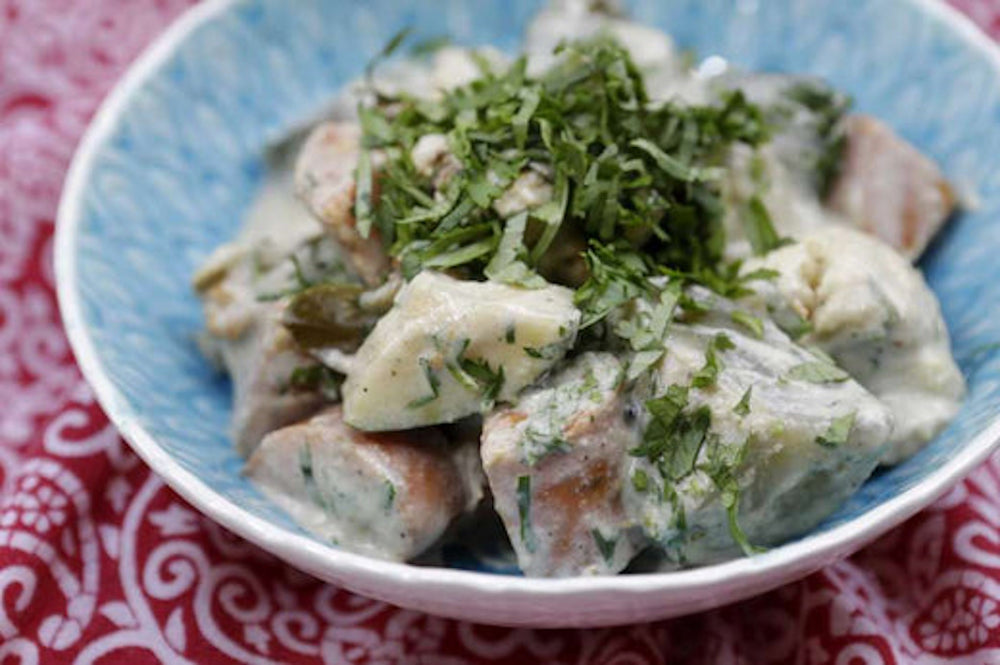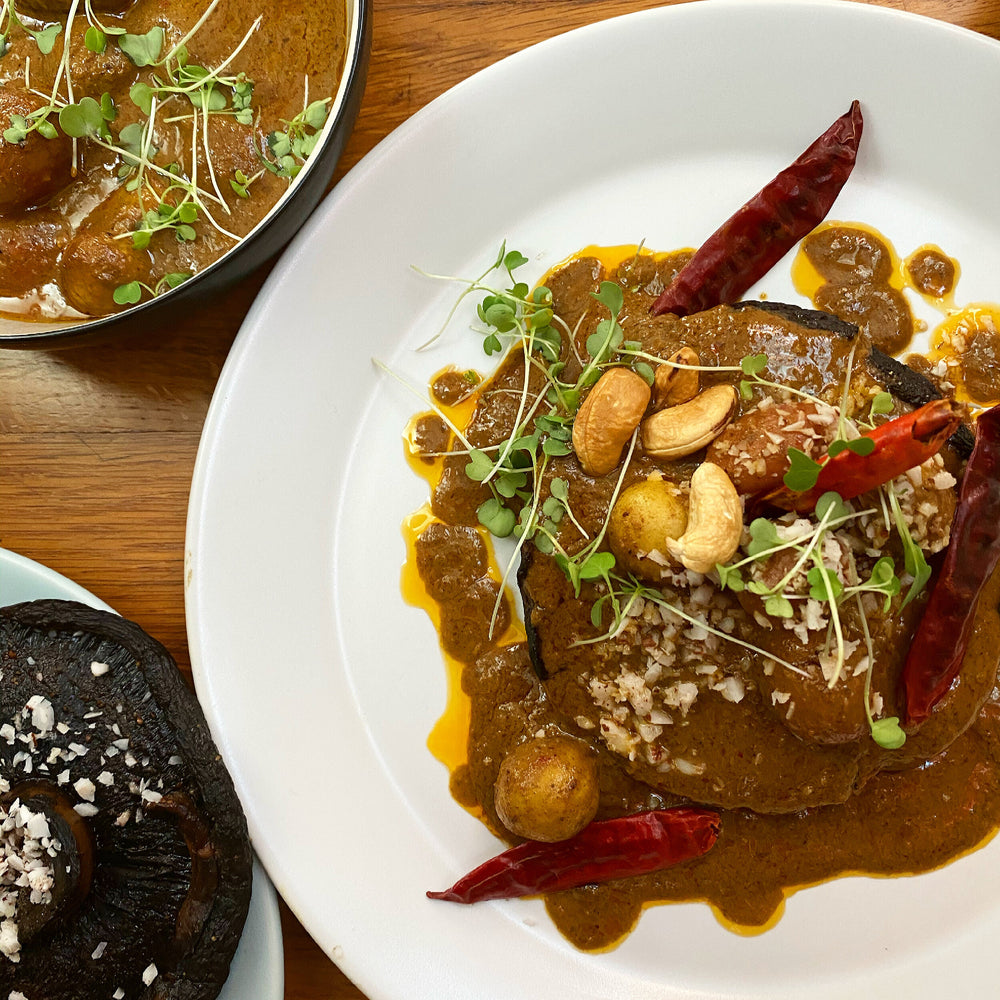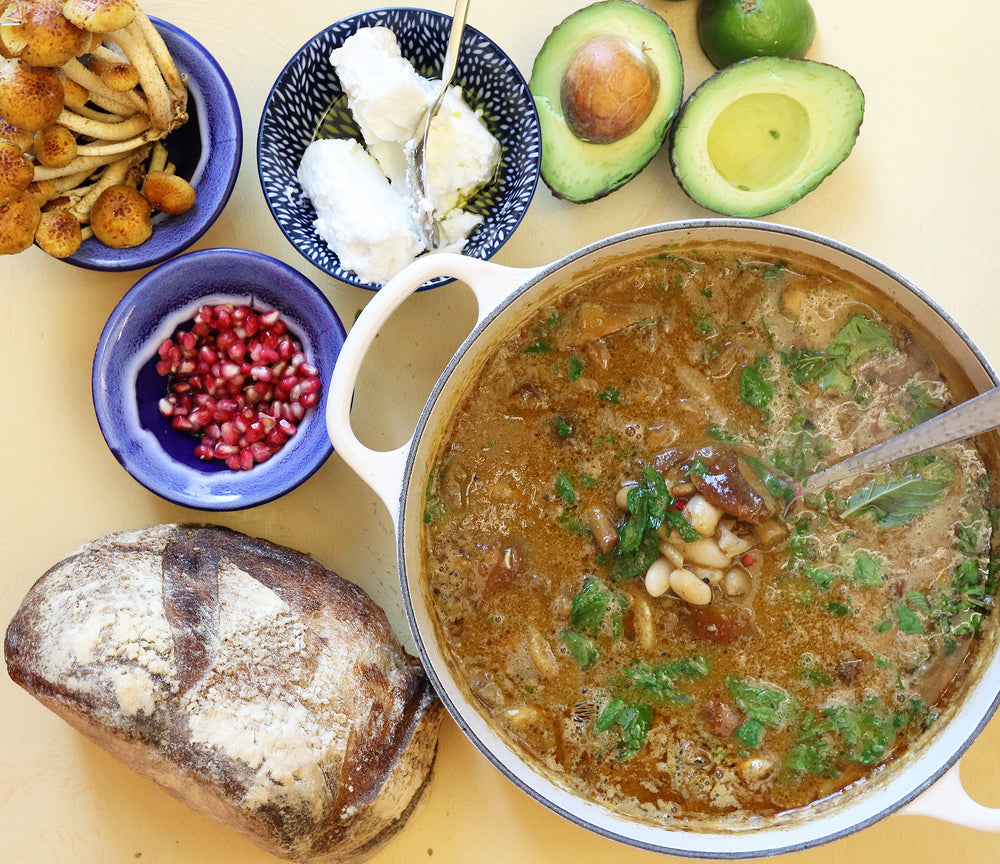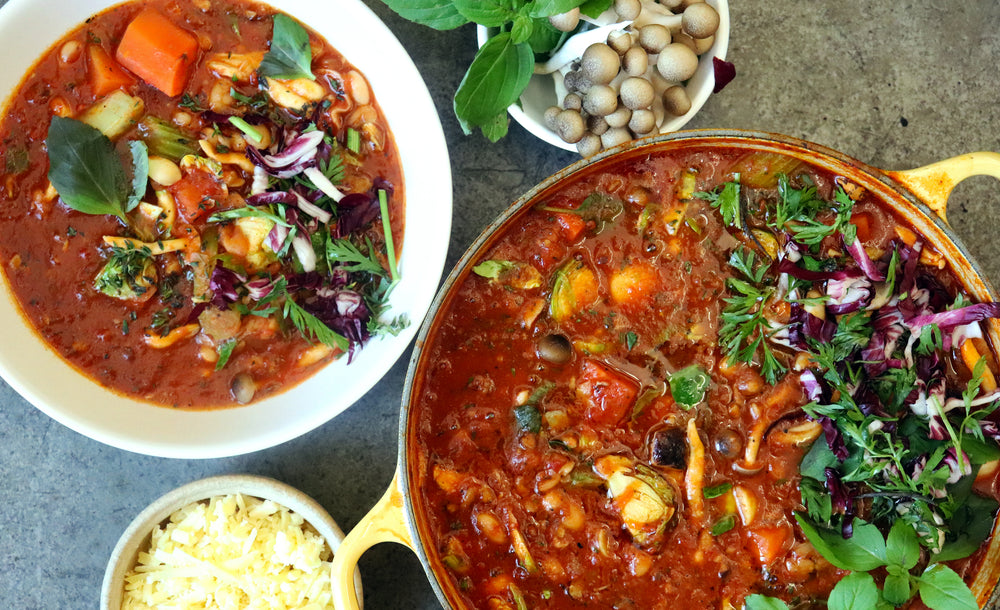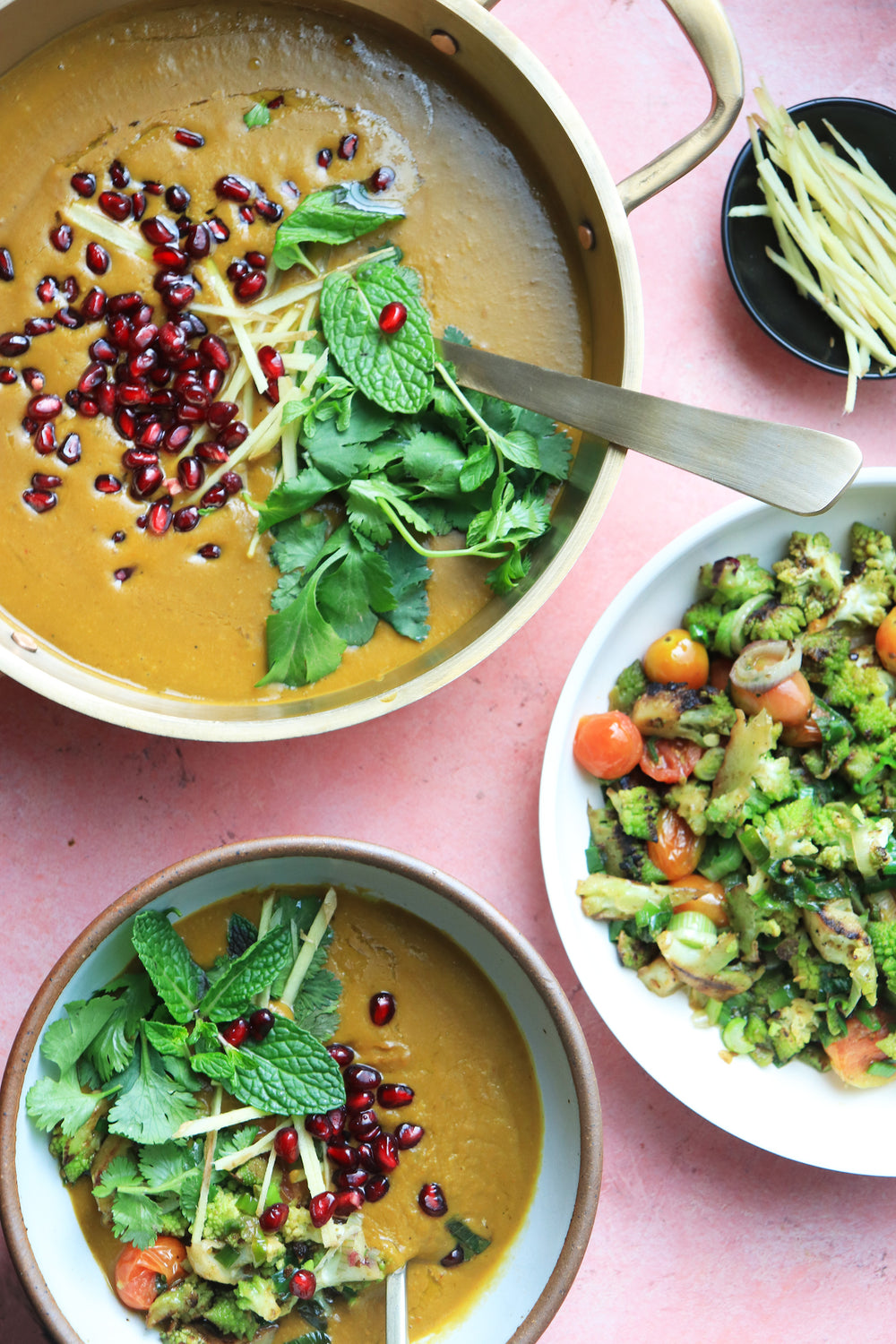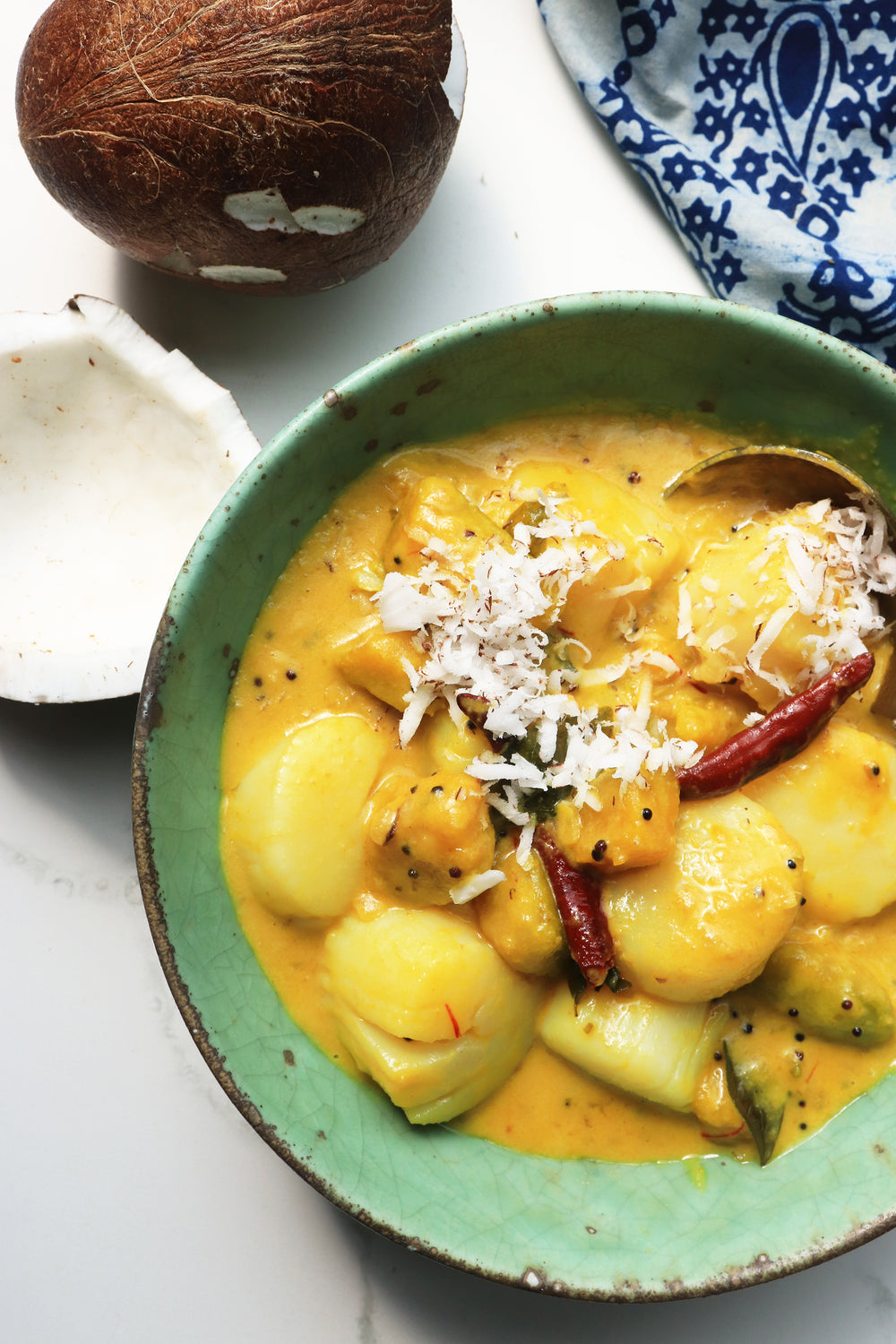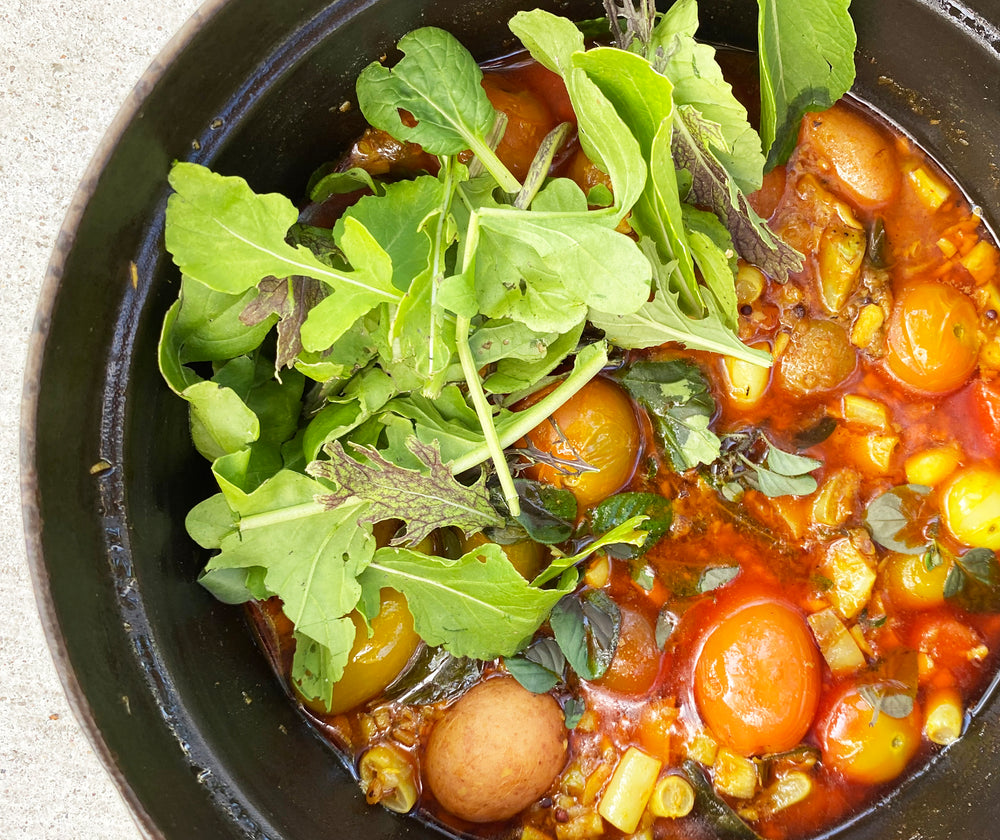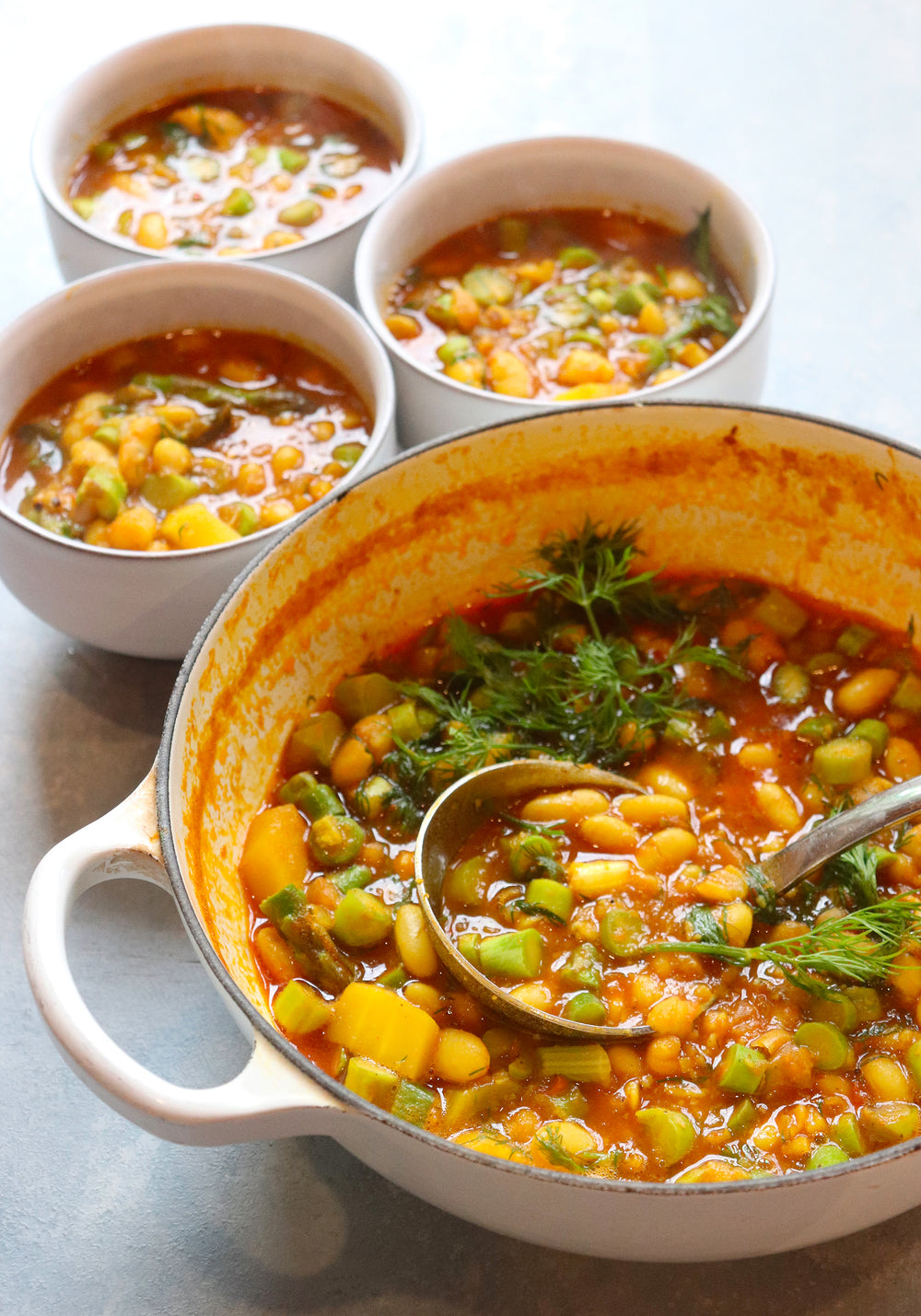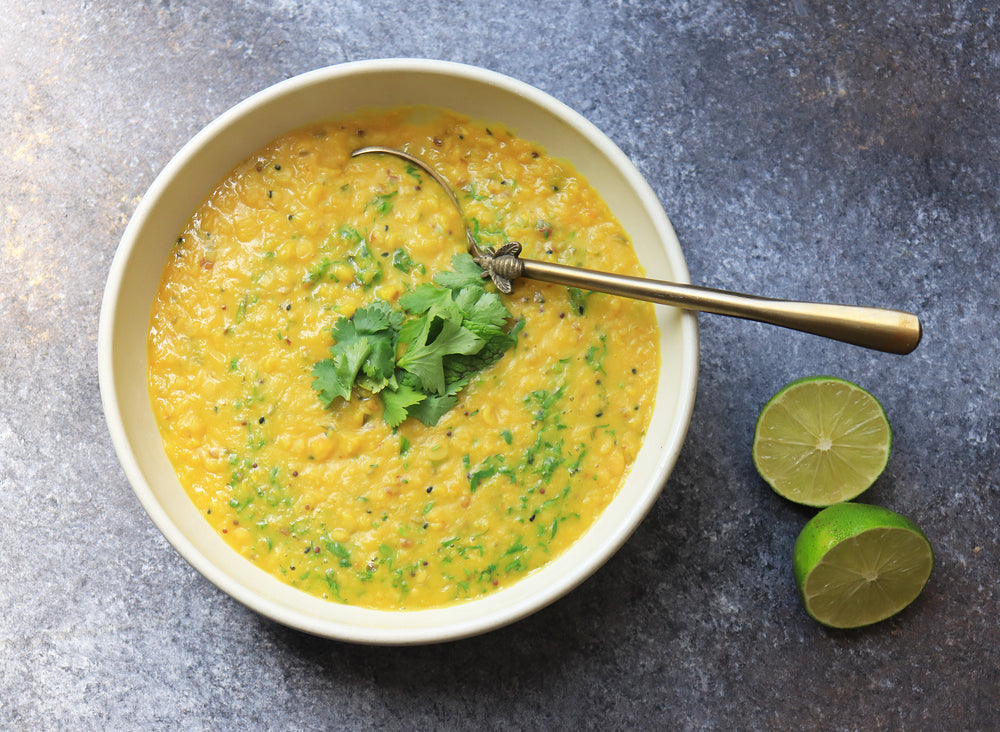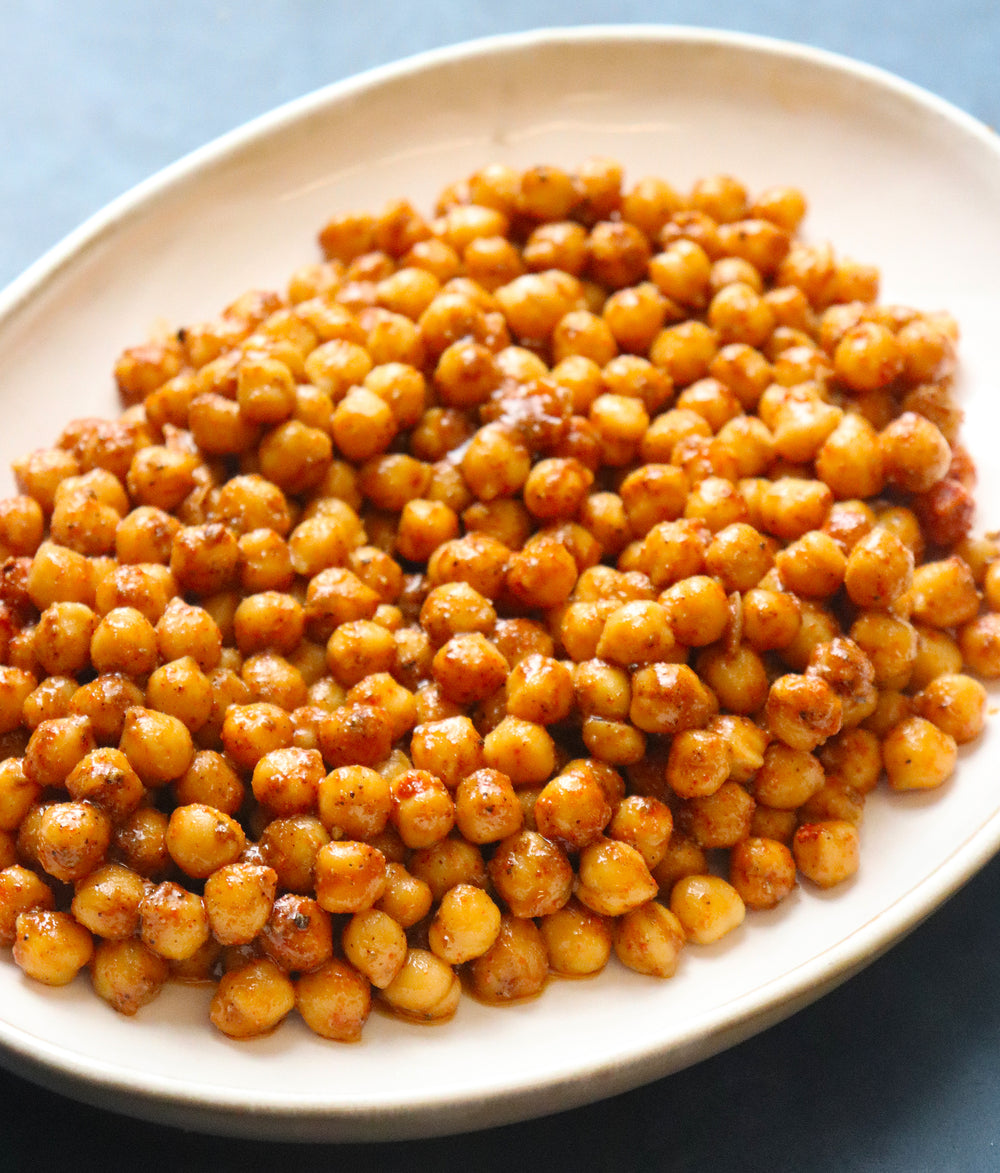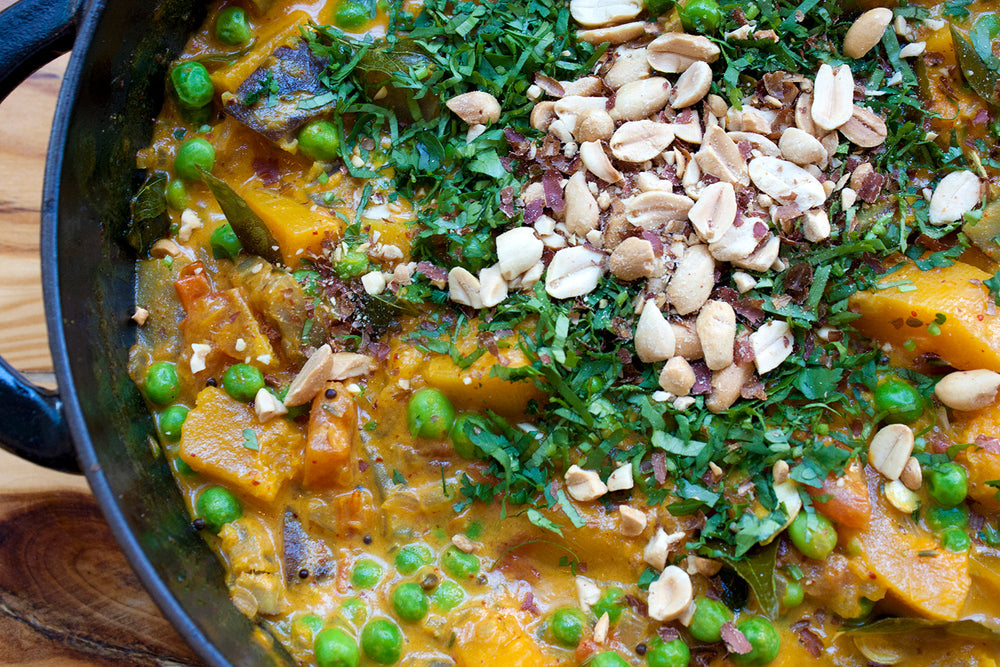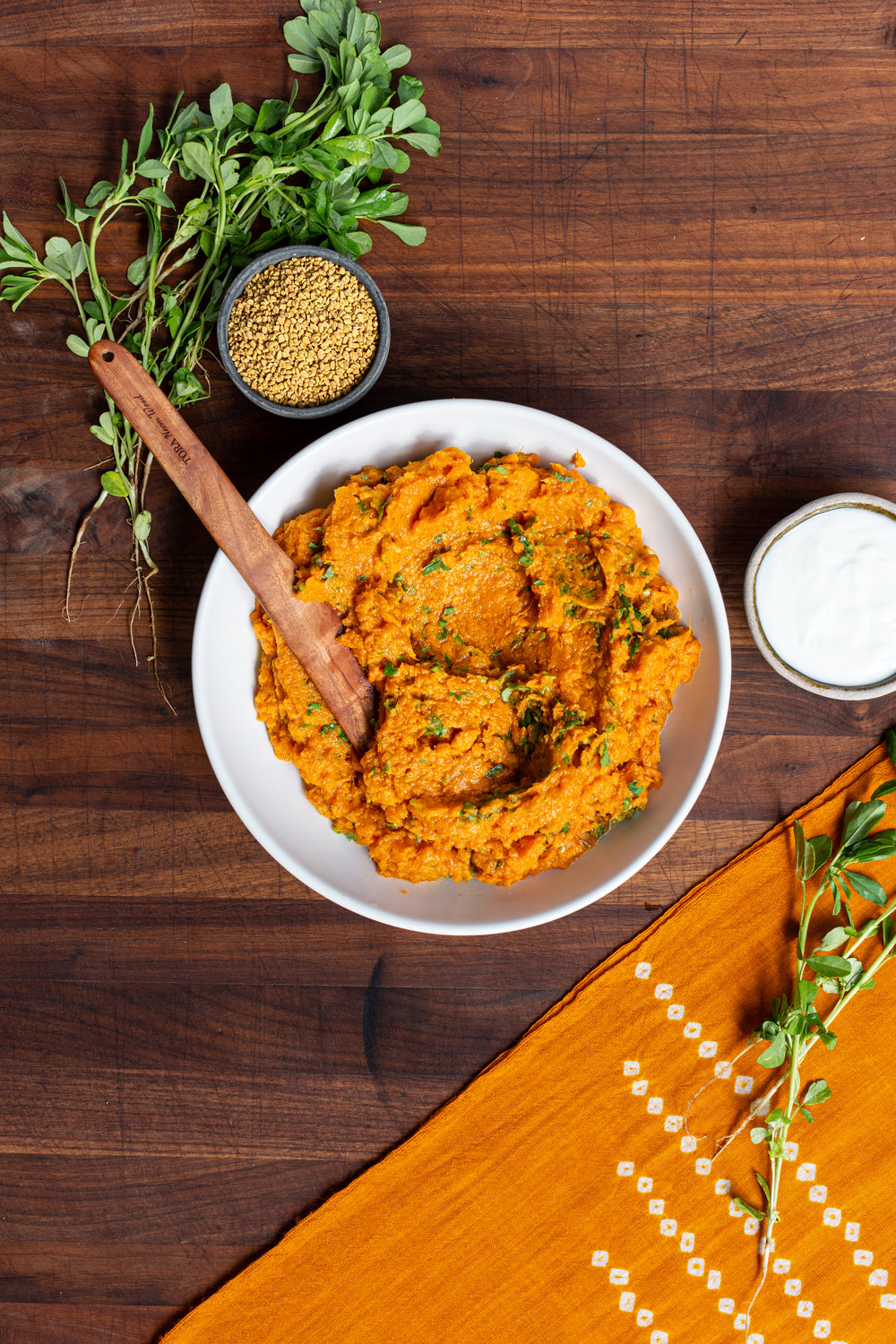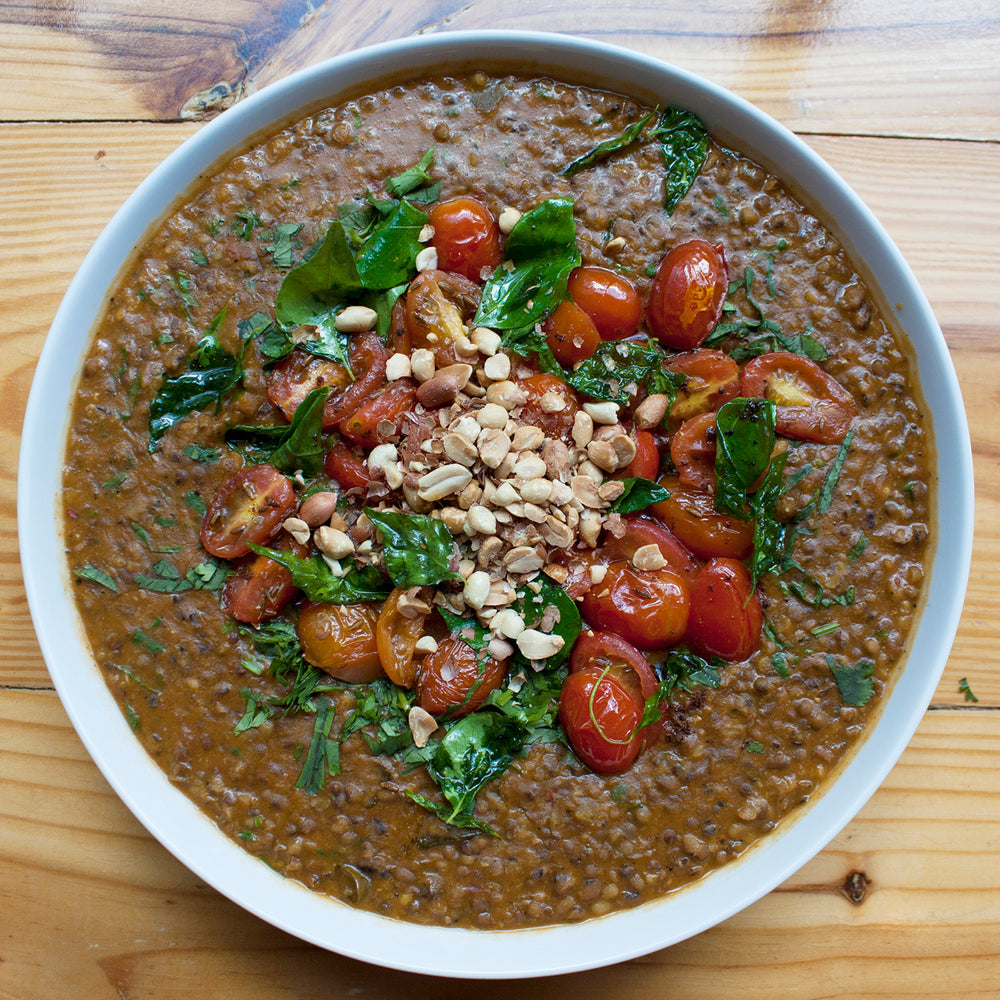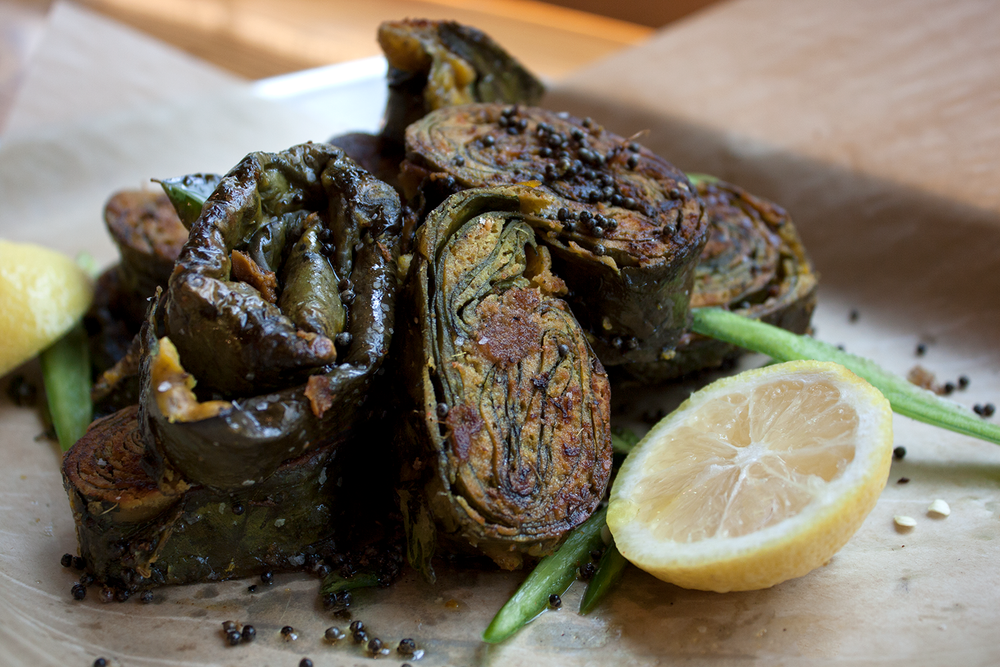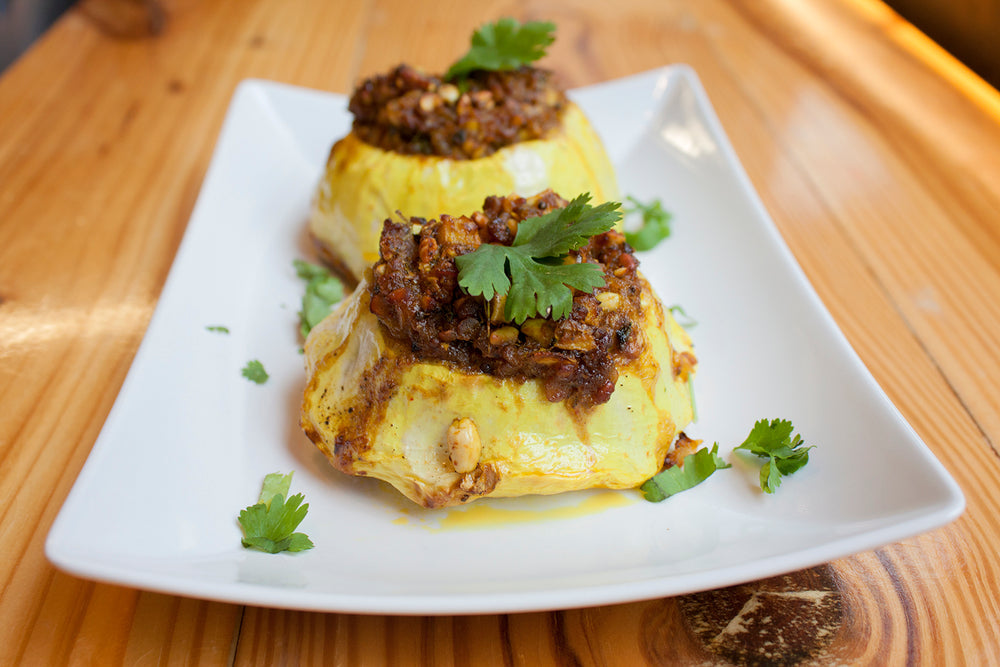
70 Min
DF
GF
NF
V
7 Vegetable Stew
Diwali is the legendary Hindu festival, essentially the Christmas of India, that signifies the victory of good over evil, darkness over light, knowledge over ignorance and hope over despair. Families clean house, purchase new clothes, exchange boxes of sweets with loved ones, light candles and lanterns on rooftops in their front yard and on balconies.
Mango leaves, marigolds and jasmine flowers are floated in deep urns with candles. Prayers and sweets are offered to Lakshmi, the goddess of wealth and fertility, followed by a lavish feast with good cheer and joy all around. Fireworks in front yards and streets wrap up this gloriously decadent holiday.
Every region eats different treats for Diwali from decadent meat curries, kebabs, & pilafs to sweet laddus, mithai and dried fruits. The Sindhis from the province of Sindh typically eat a 7 vegetable stew with pooris (fried balloon bread) and halwa.
Diwali is the legendary Hindu festival, essentially the Christmas of India, that signifies the victory of good over evil, darkness over light, knowledge over ignorance and hope over despair. Families clean house, purchase new clothes, exchange boxes of sweets with loved ones, light candles and lanterns on rooftops in their front yard and on balconies.
Mango leaves, marigolds and jasmine flowers are floated in deep urns with candles. Prayers and sweets are offered to Lakshmi, the goddess of wealth and fertility, followed by a lavish feast with good cheer and joy all around. Fireworks in front yards and streets wrap up this gloriously decadent holiday.
Every region eats different treats for Diwali from decadent meat curries, kebabs, & pilafs to sweet laddus, mithai and dried fruits. The Sindhis from the province of Sindh typically eat a 7 vegetable stew with pooris (fried balloon bread) and halwa.

70 Minutes
4

Notes & Variations
- Lauki is a type of gourd, sometimes referred to as calabash.
- Almost any vegetables will work with this recipe; be sure to add the vegetable at the correct cooking time.
- This curry is also wonderful with a crusty loaf of bread or rice.
- It can be made a day ahead — add the tomatoes and herbs at the end.
- To make vegan, substitute ghee for coconut oil.

Notes & Variations
- Lauki is a type of gourd, sometimes referred to as calabash.
- Almost any vegetables will work with this recipe; be sure to add the vegetable at the correct cooking time.
- This curry is also wonderful with a crusty loaf of bread or rice.
- It can be made a day ahead — add the tomatoes and herbs at the end.
- To make vegan, substitute ghee for coconut oil.
Tags:

Stock Your Pantry
Tags:

Stock Your Pantry
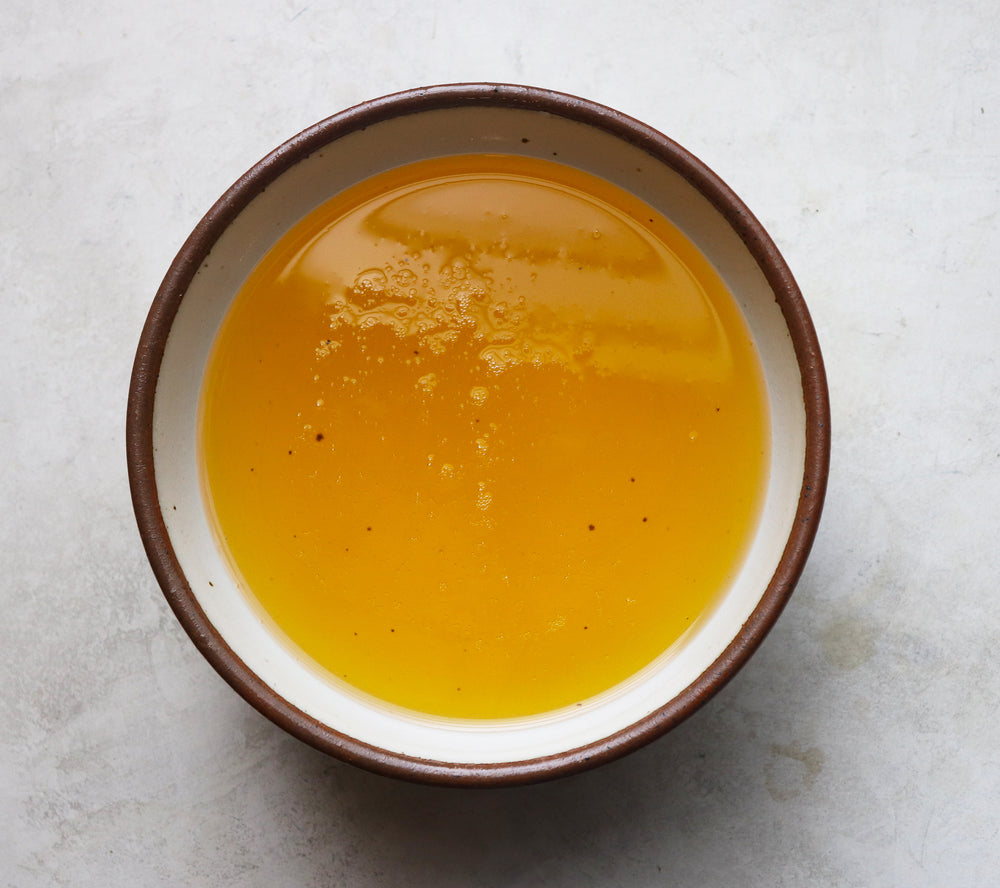
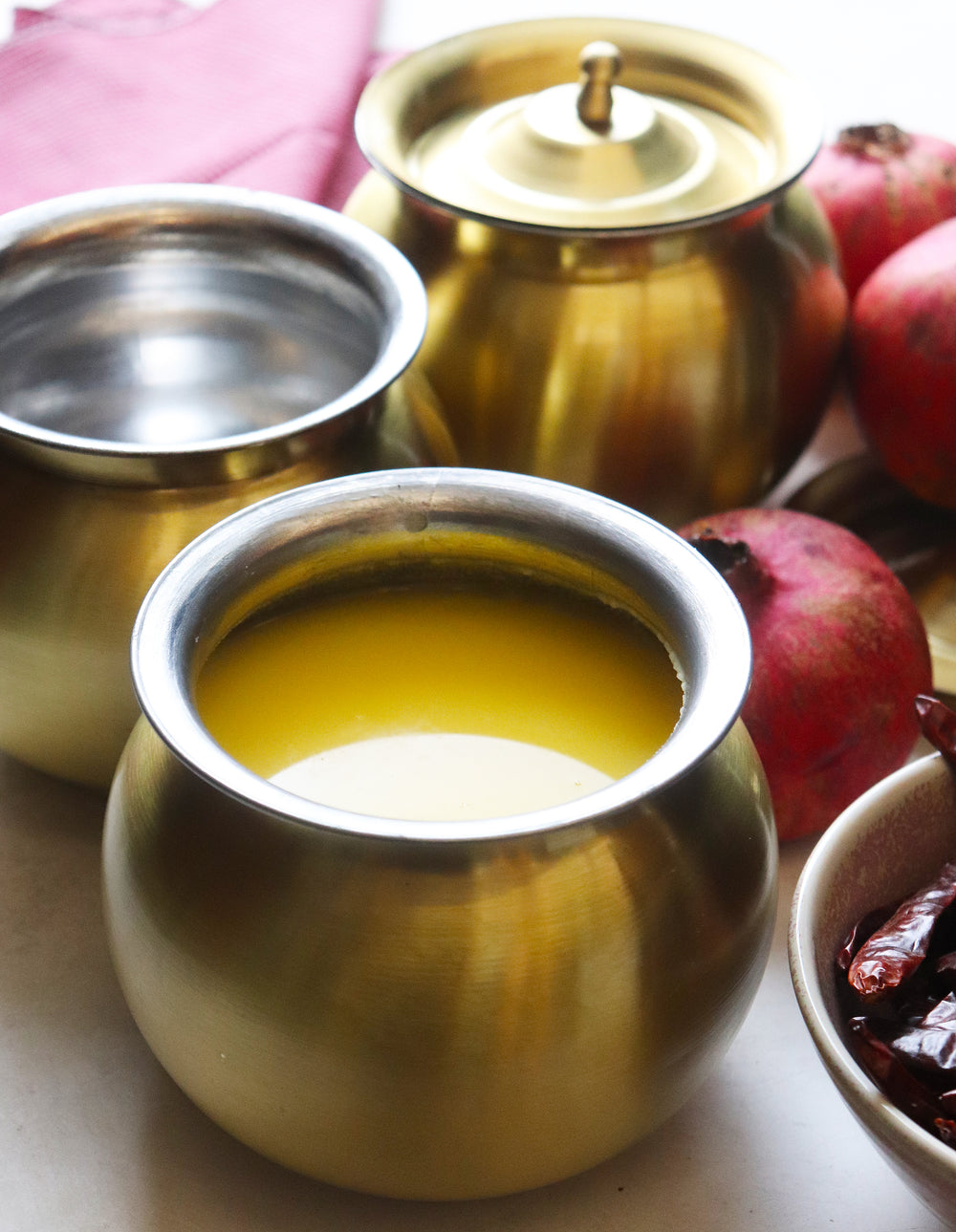
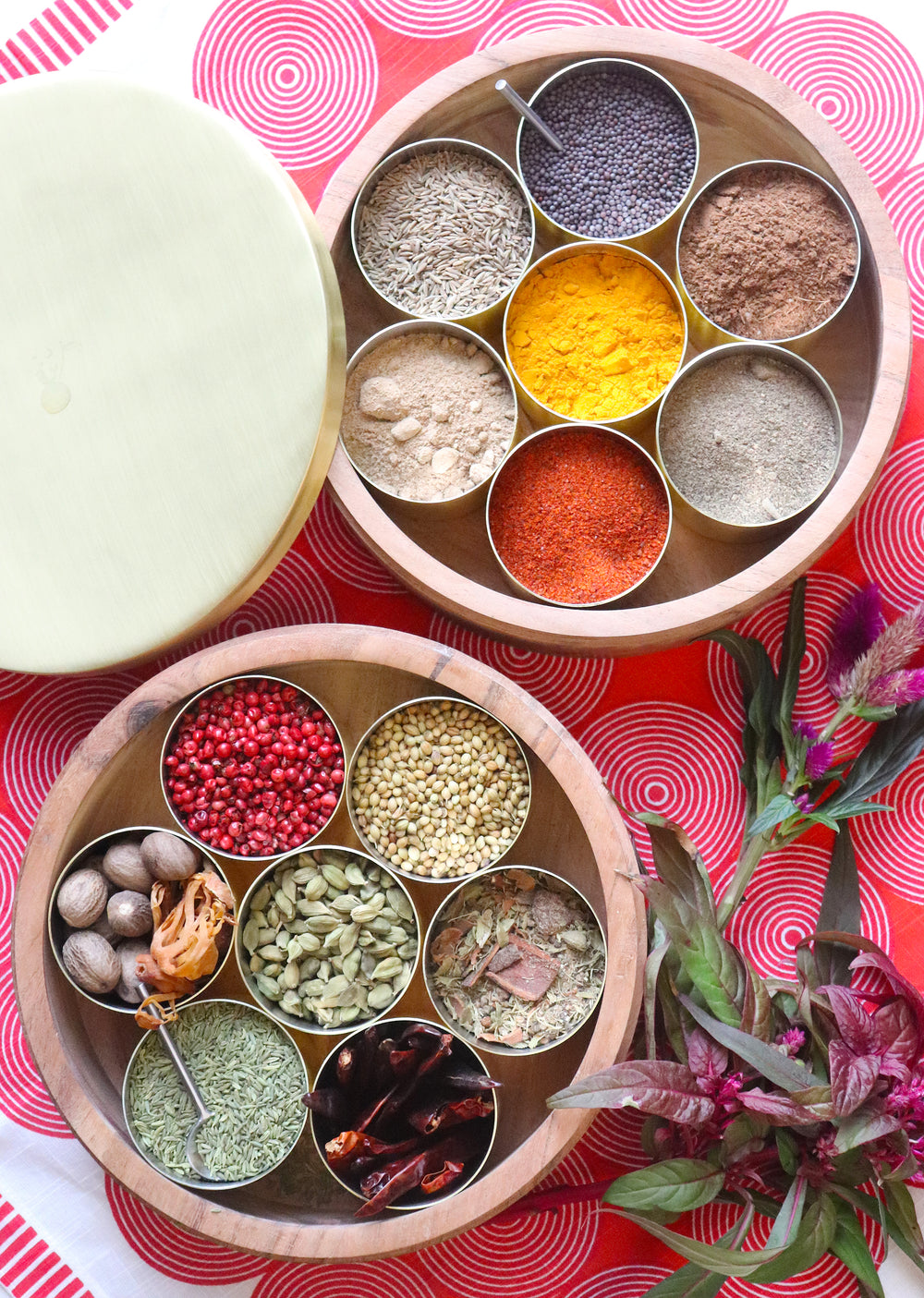
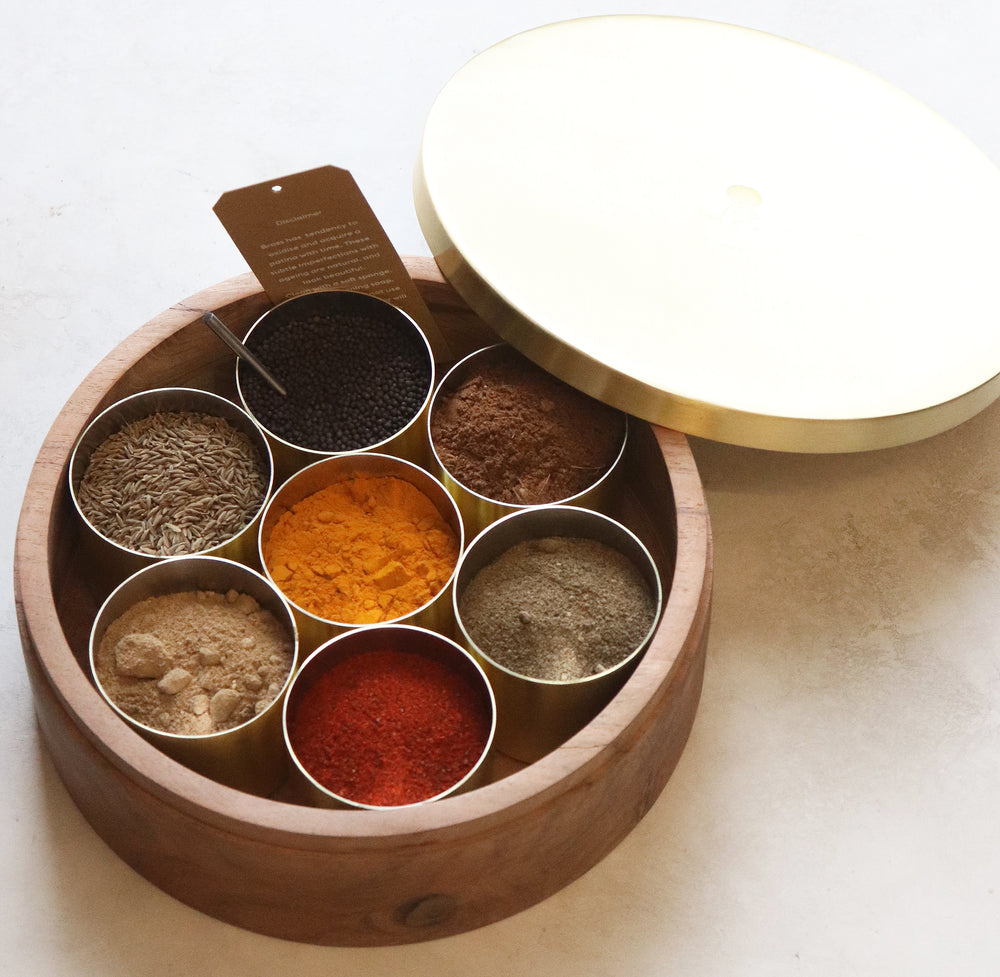
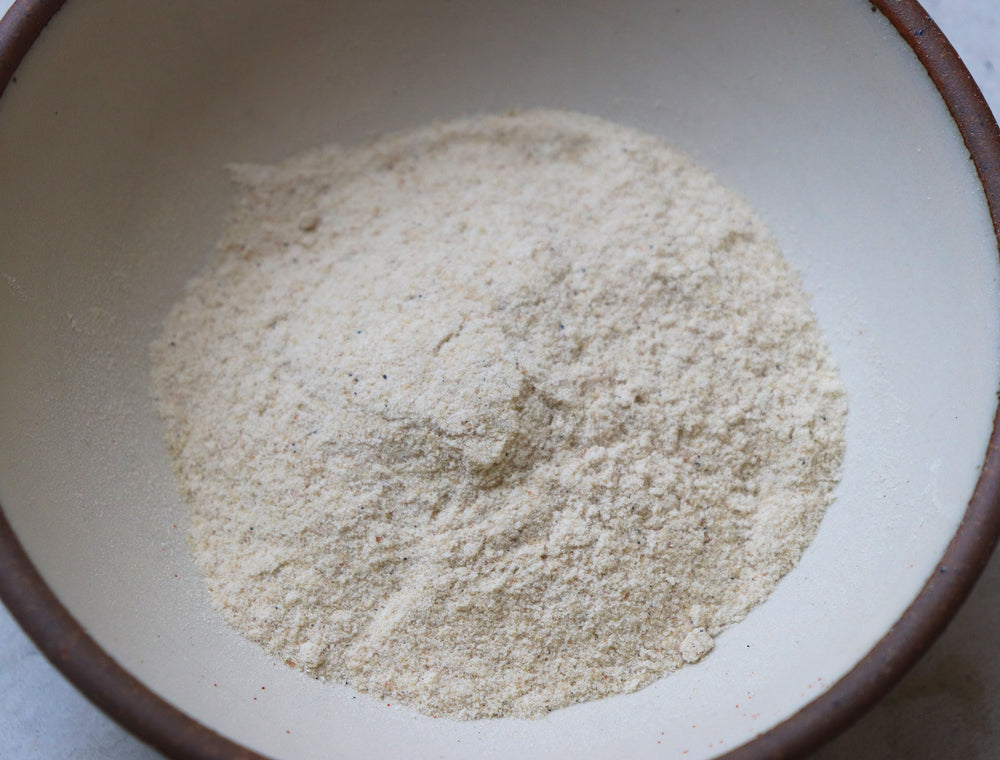
Don't have garlic or onion powder? Meet your new best friend.
Asafoetida is an off white powder that tastes like onions and garlic after cooked. Give it a taste in the recipes below!
A NEW PANTRY STAPLE

